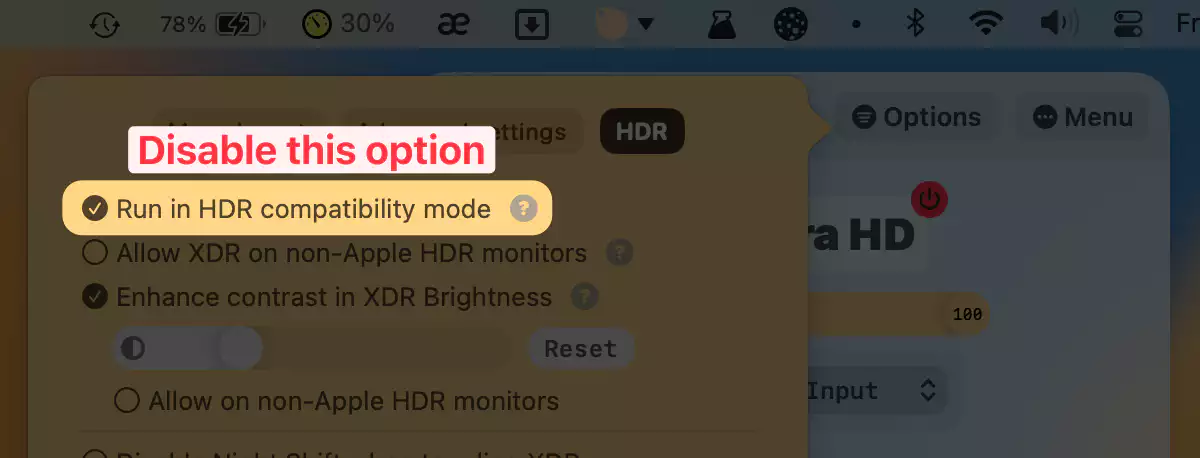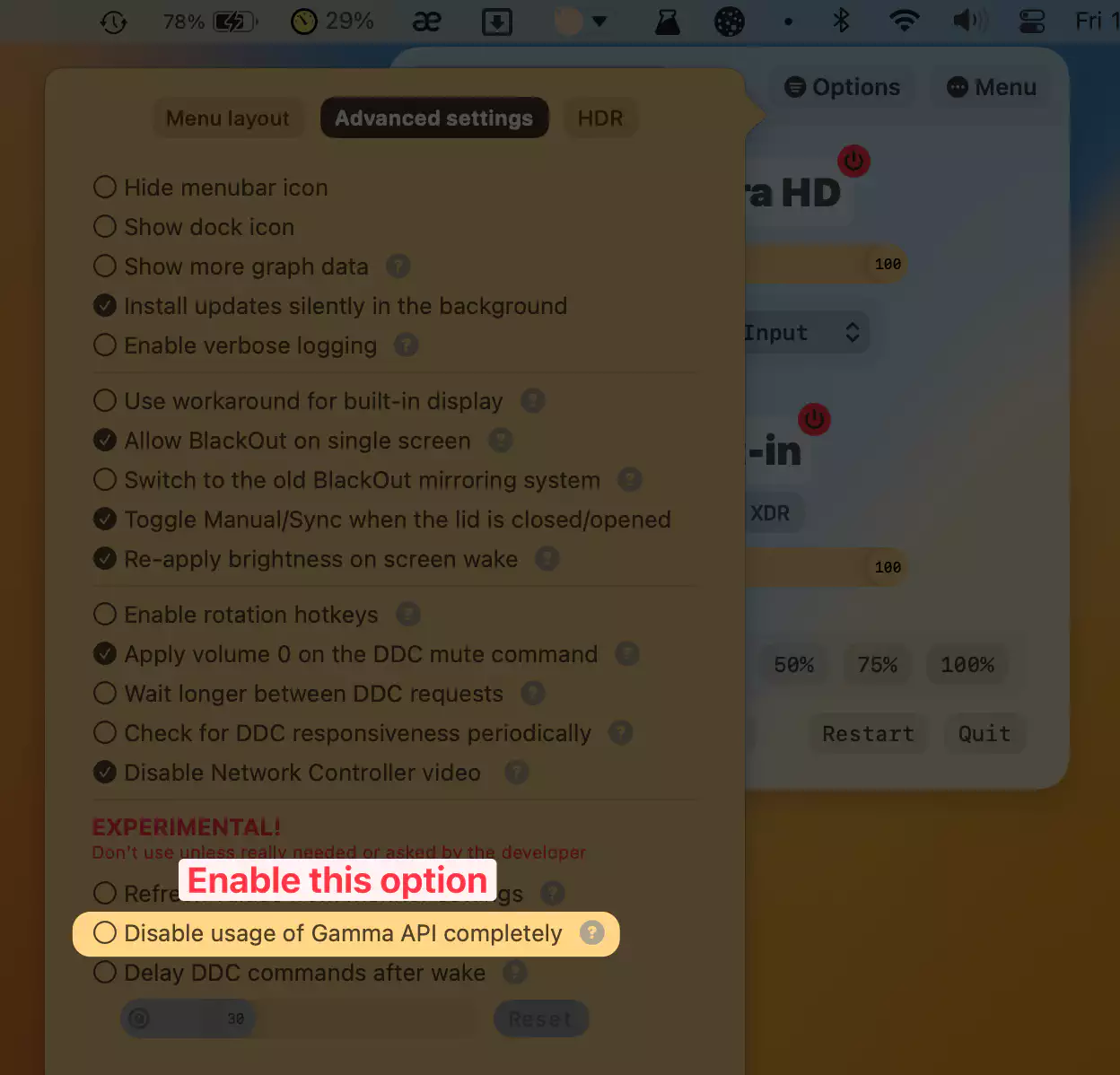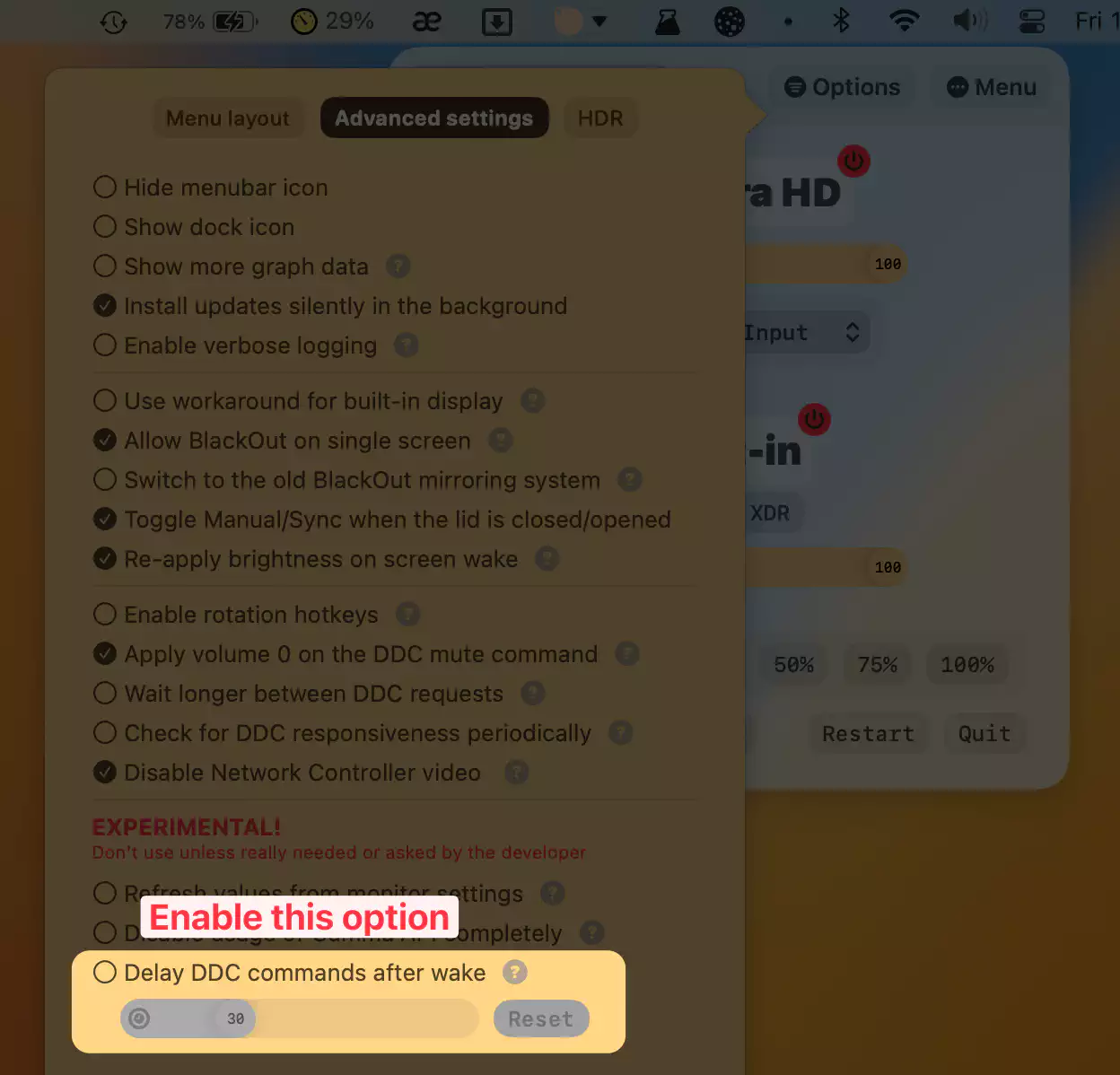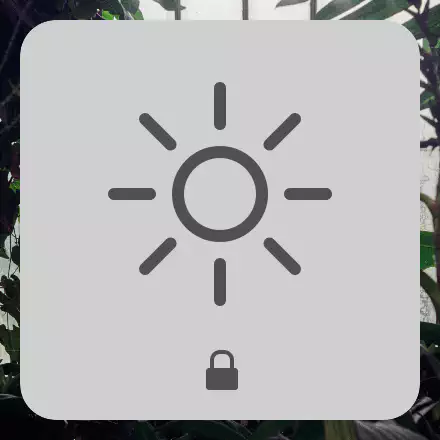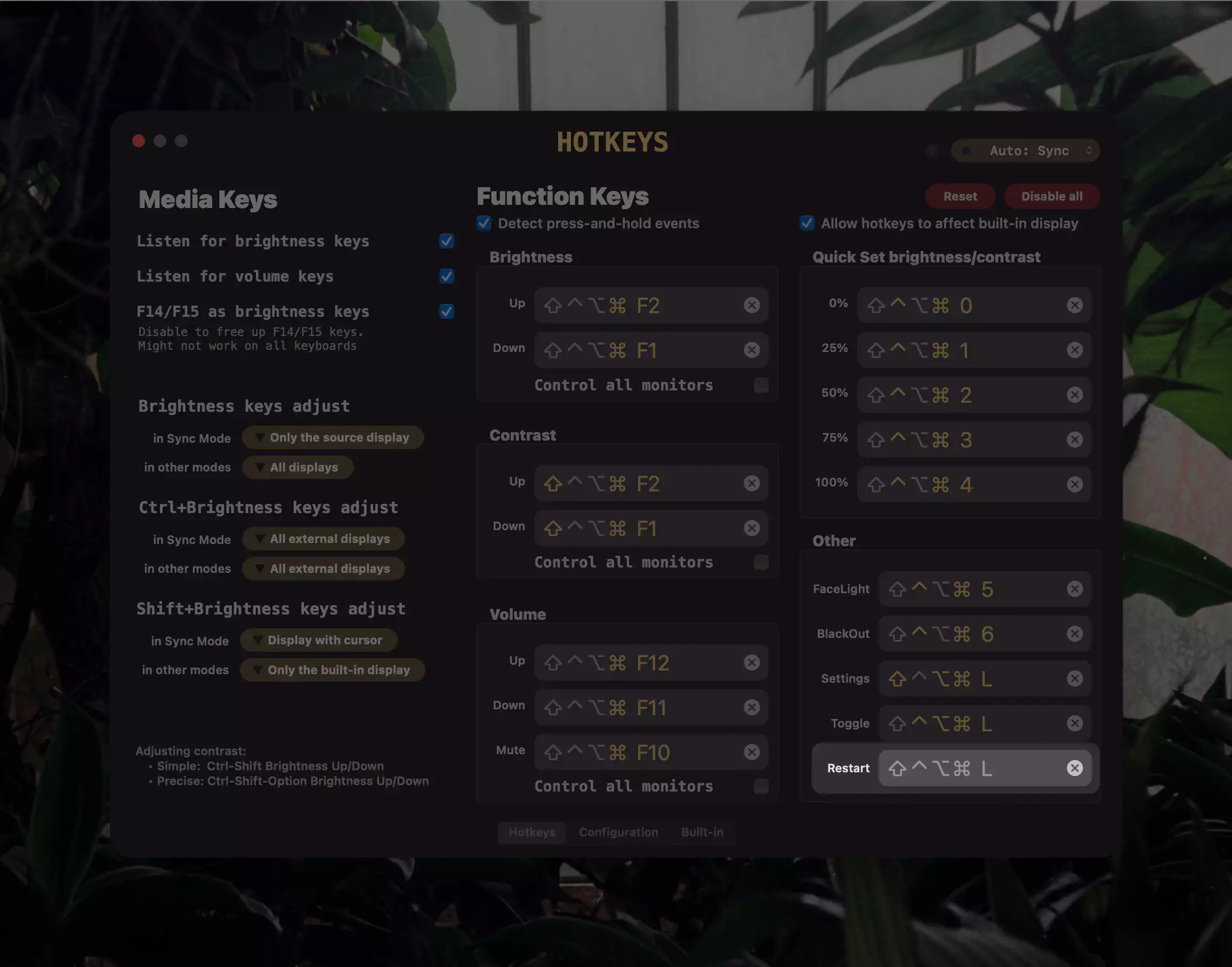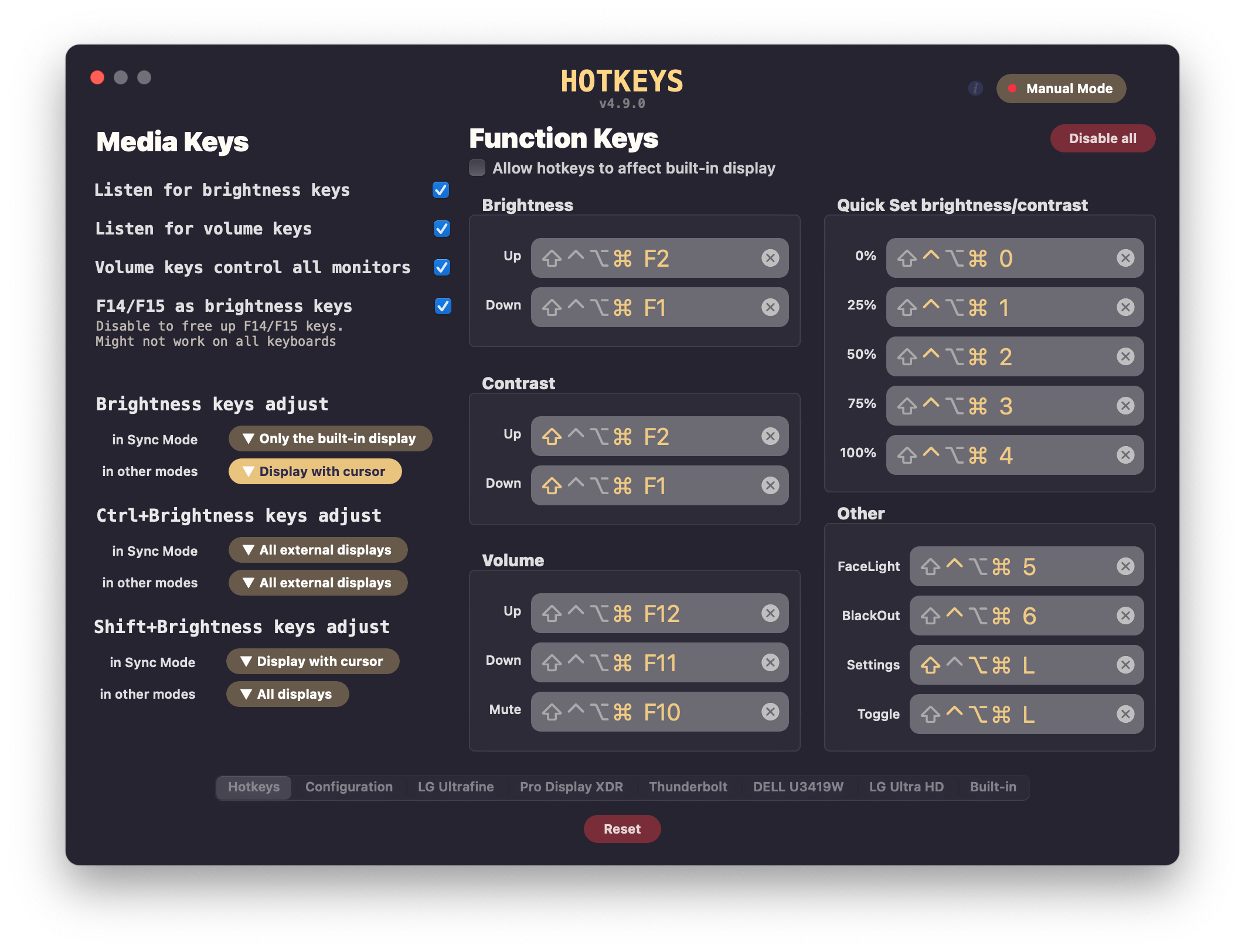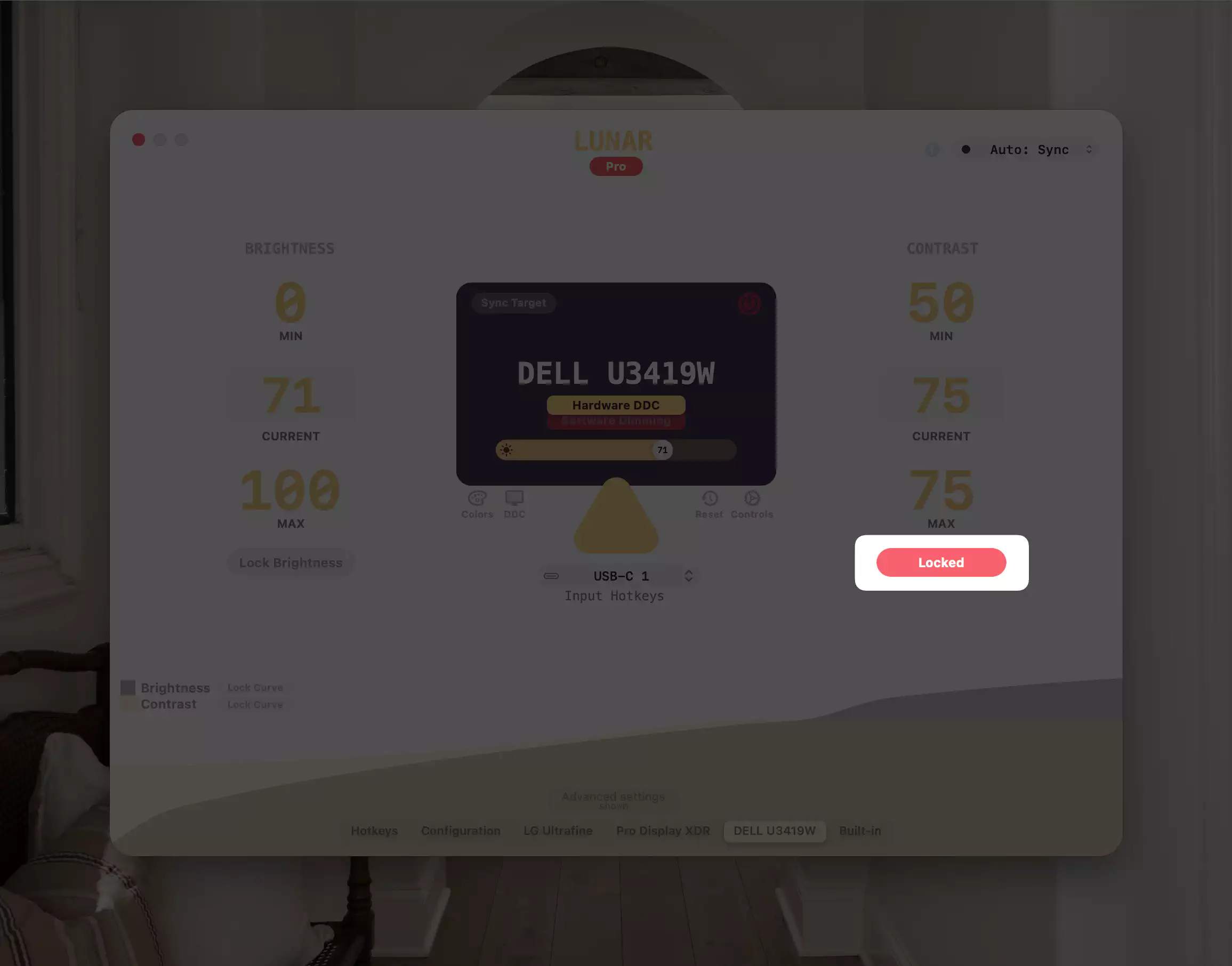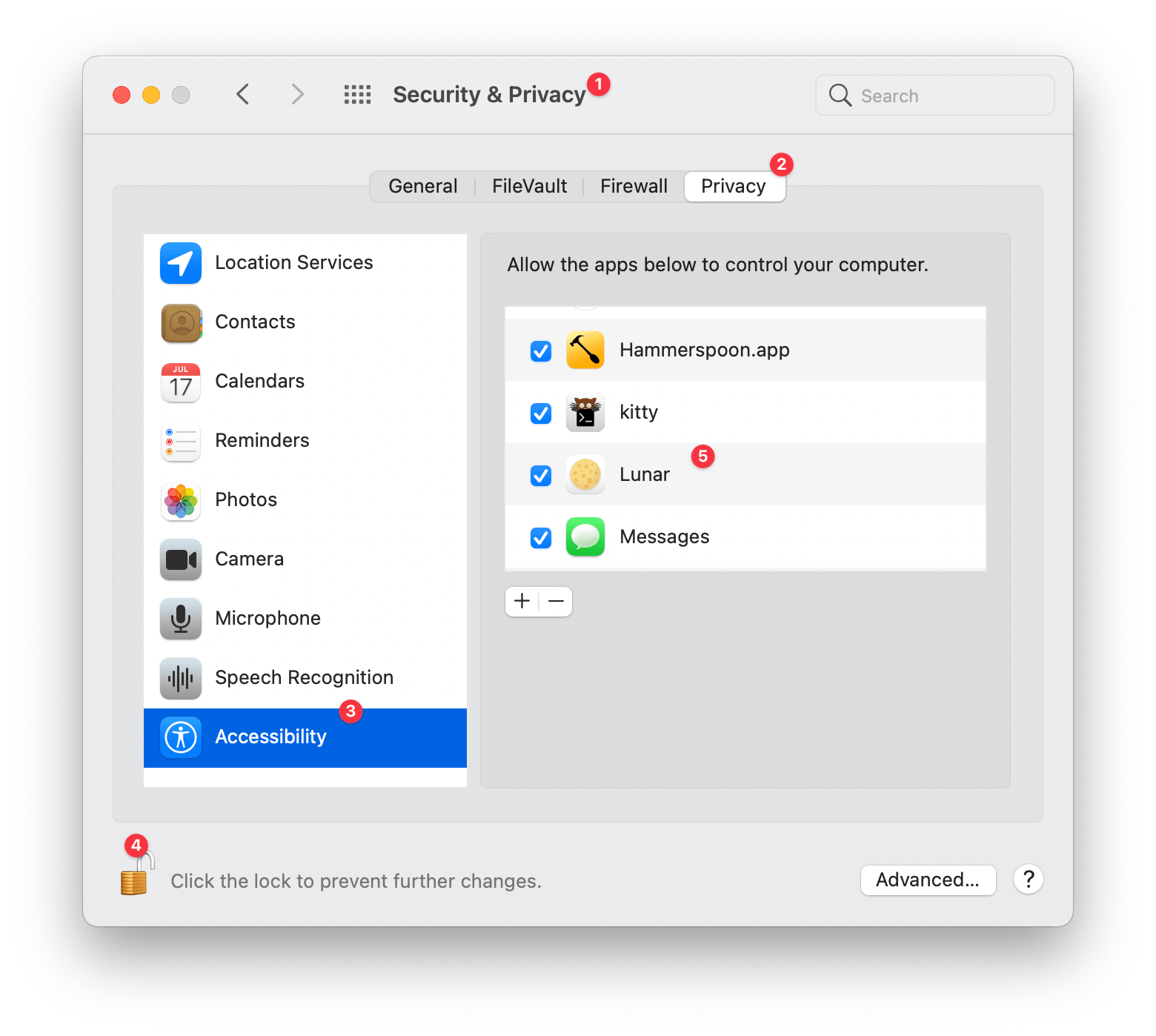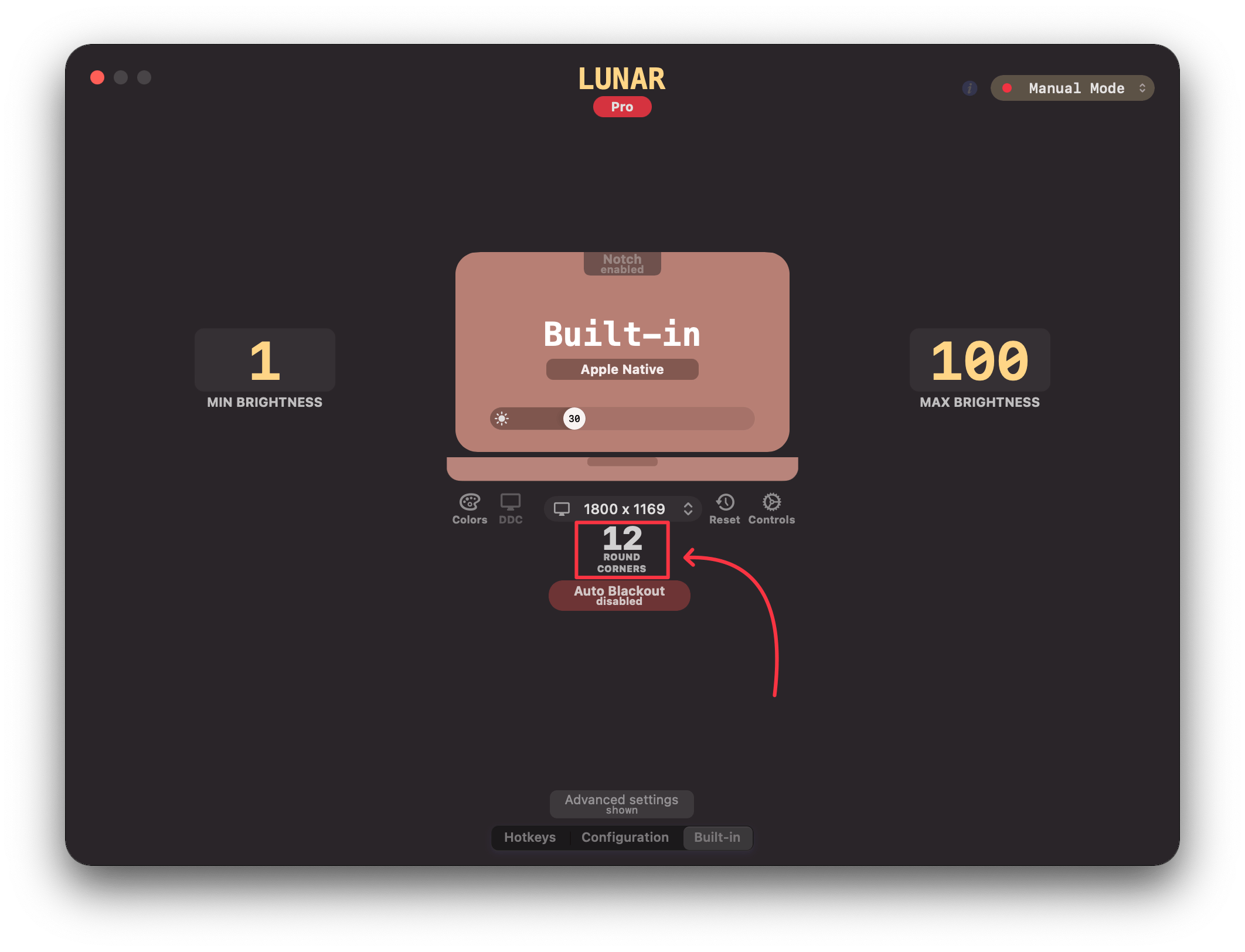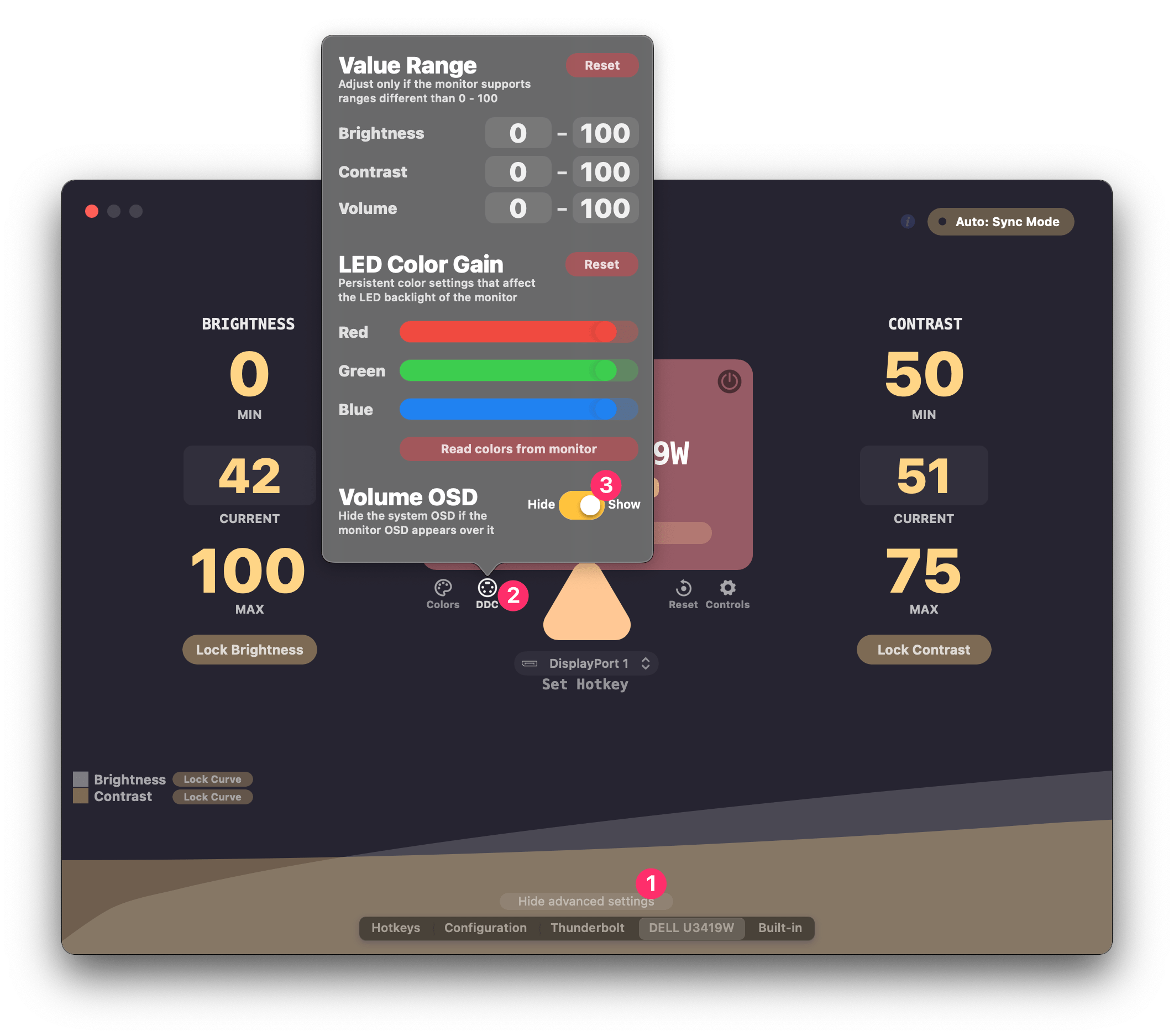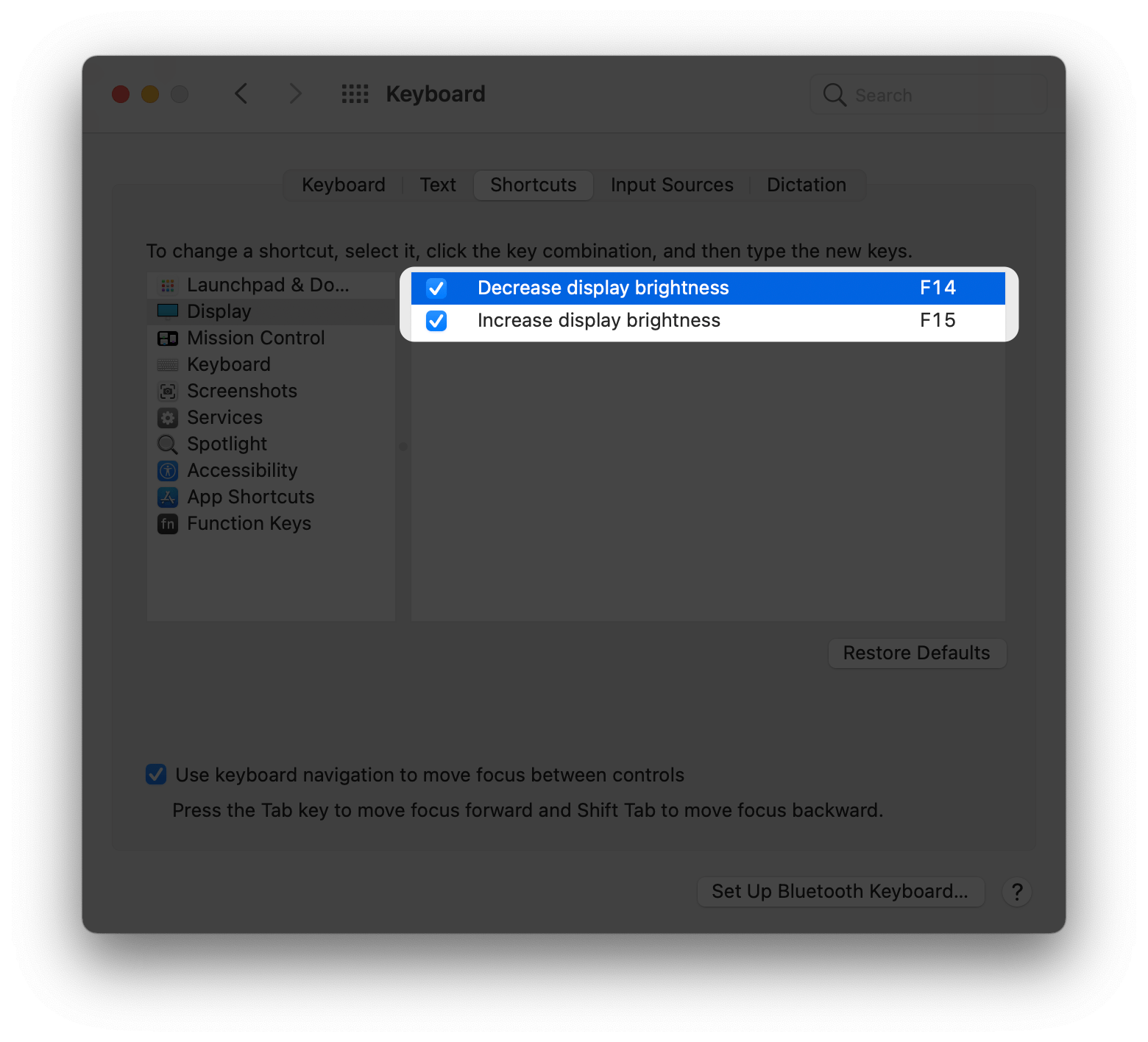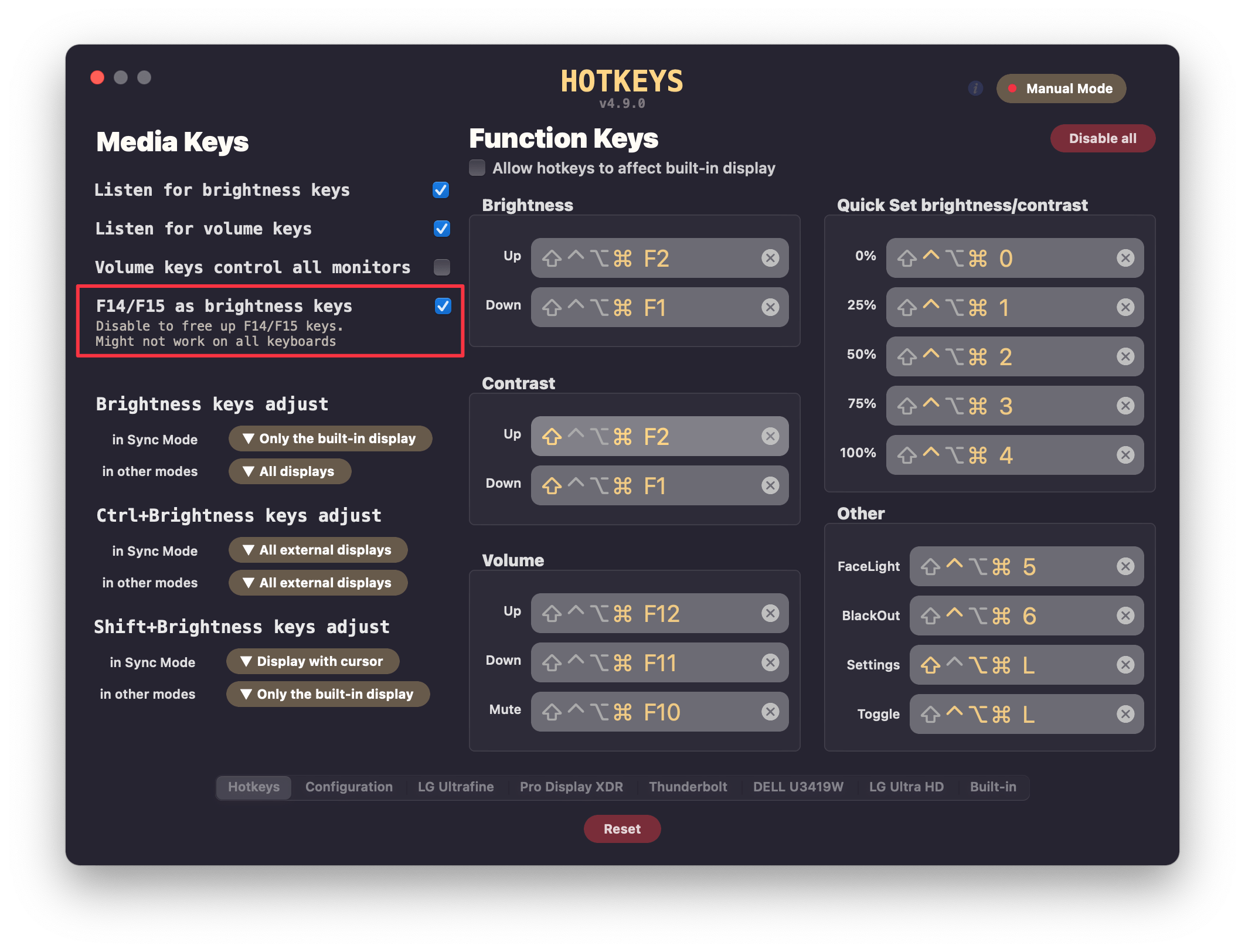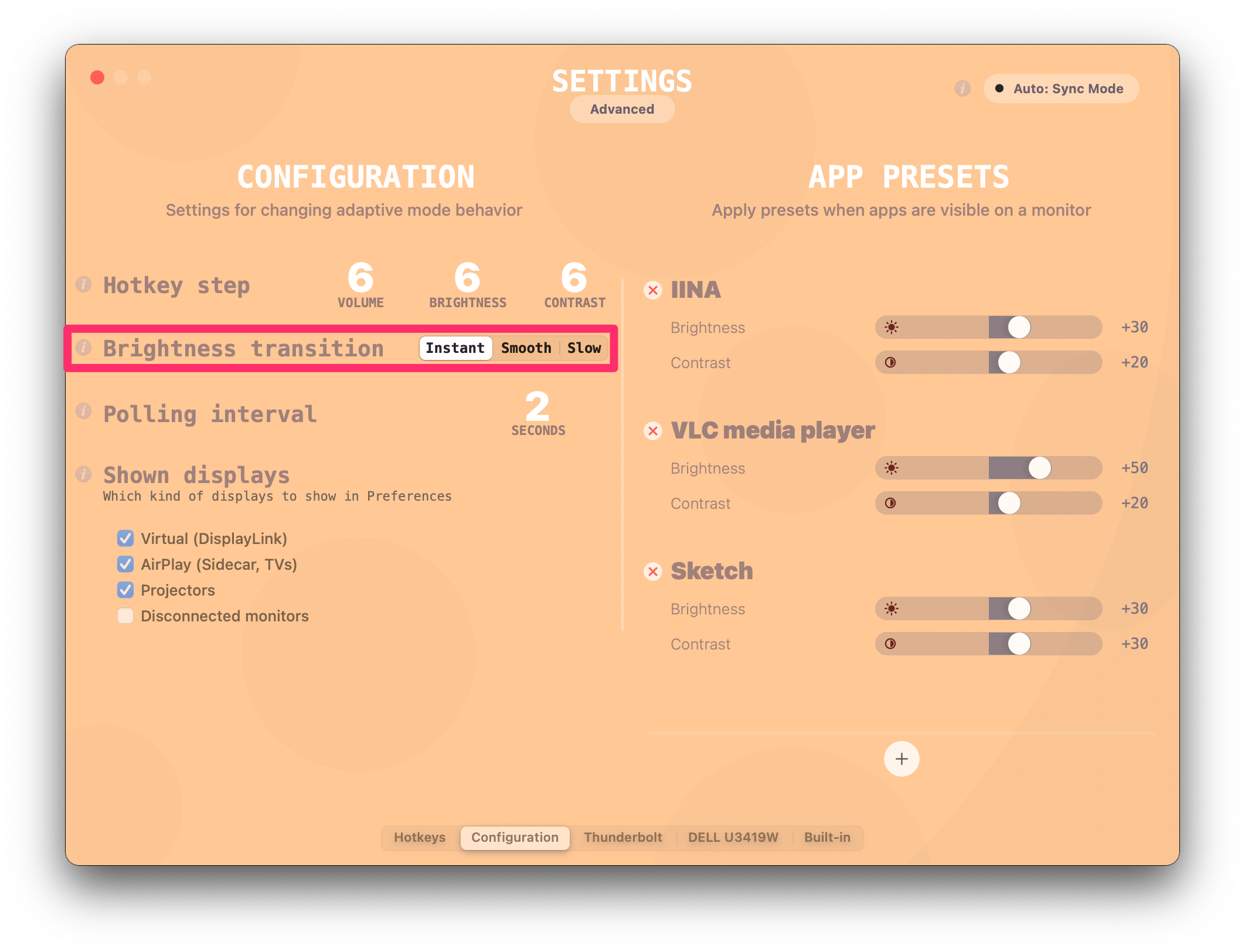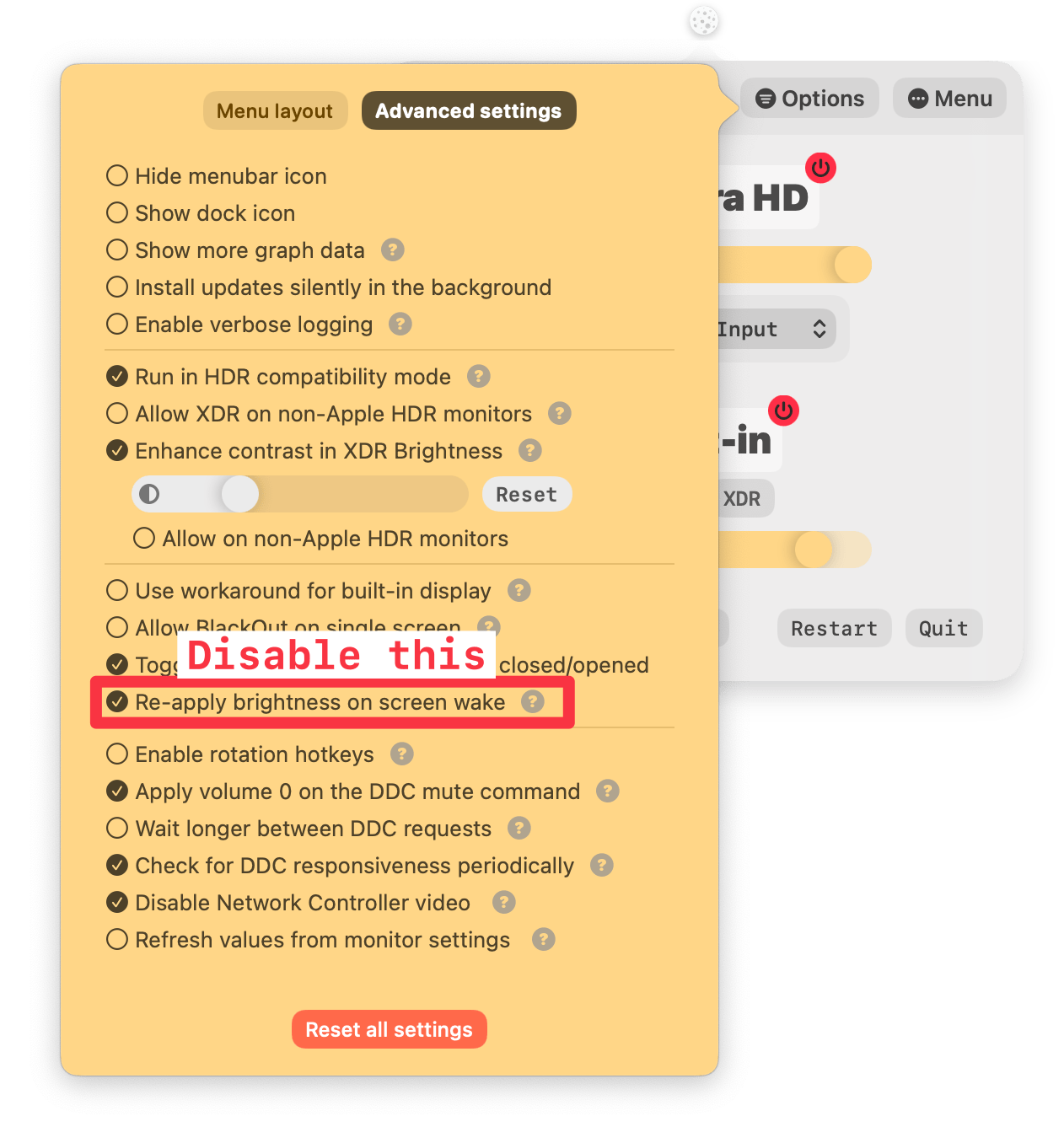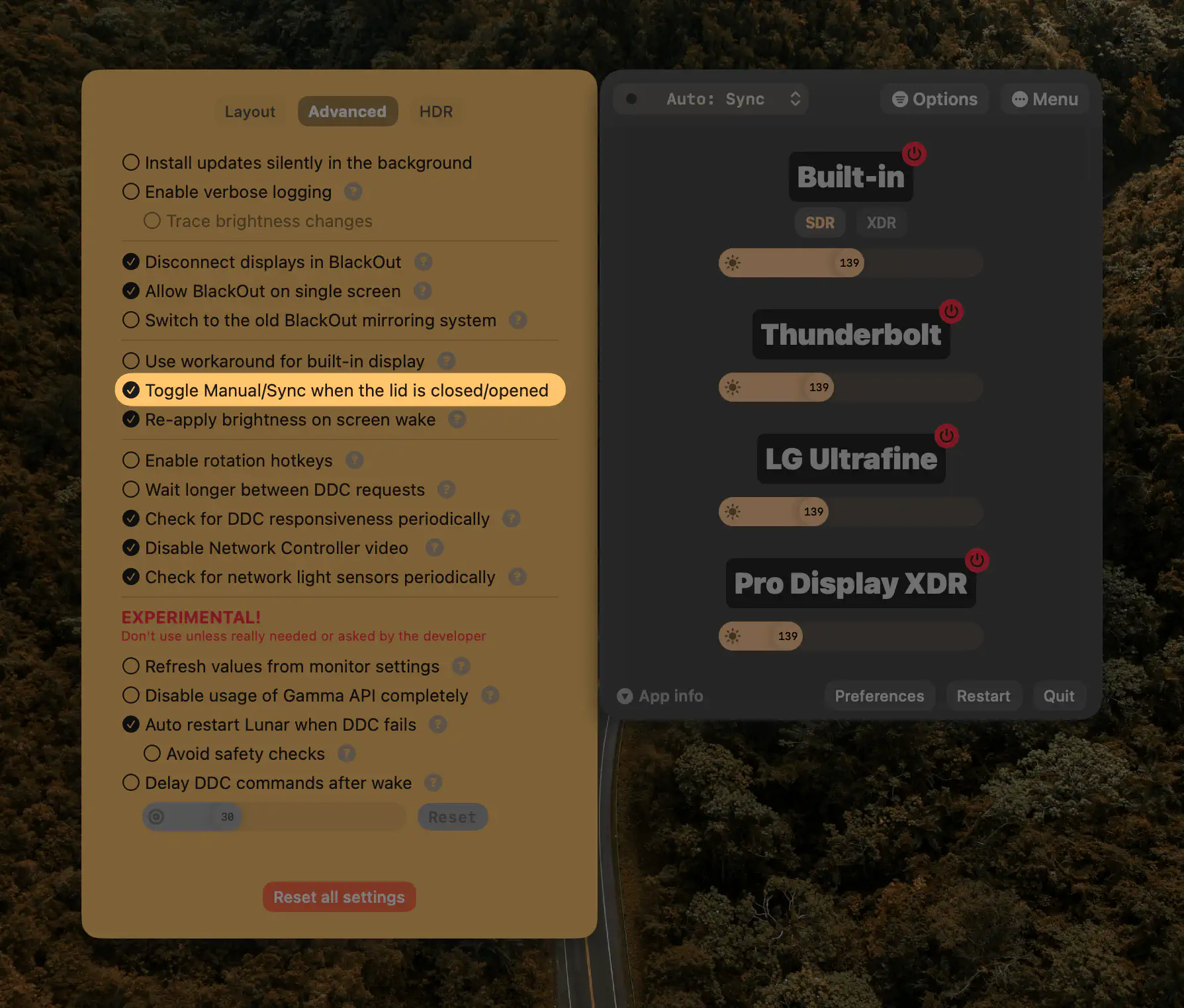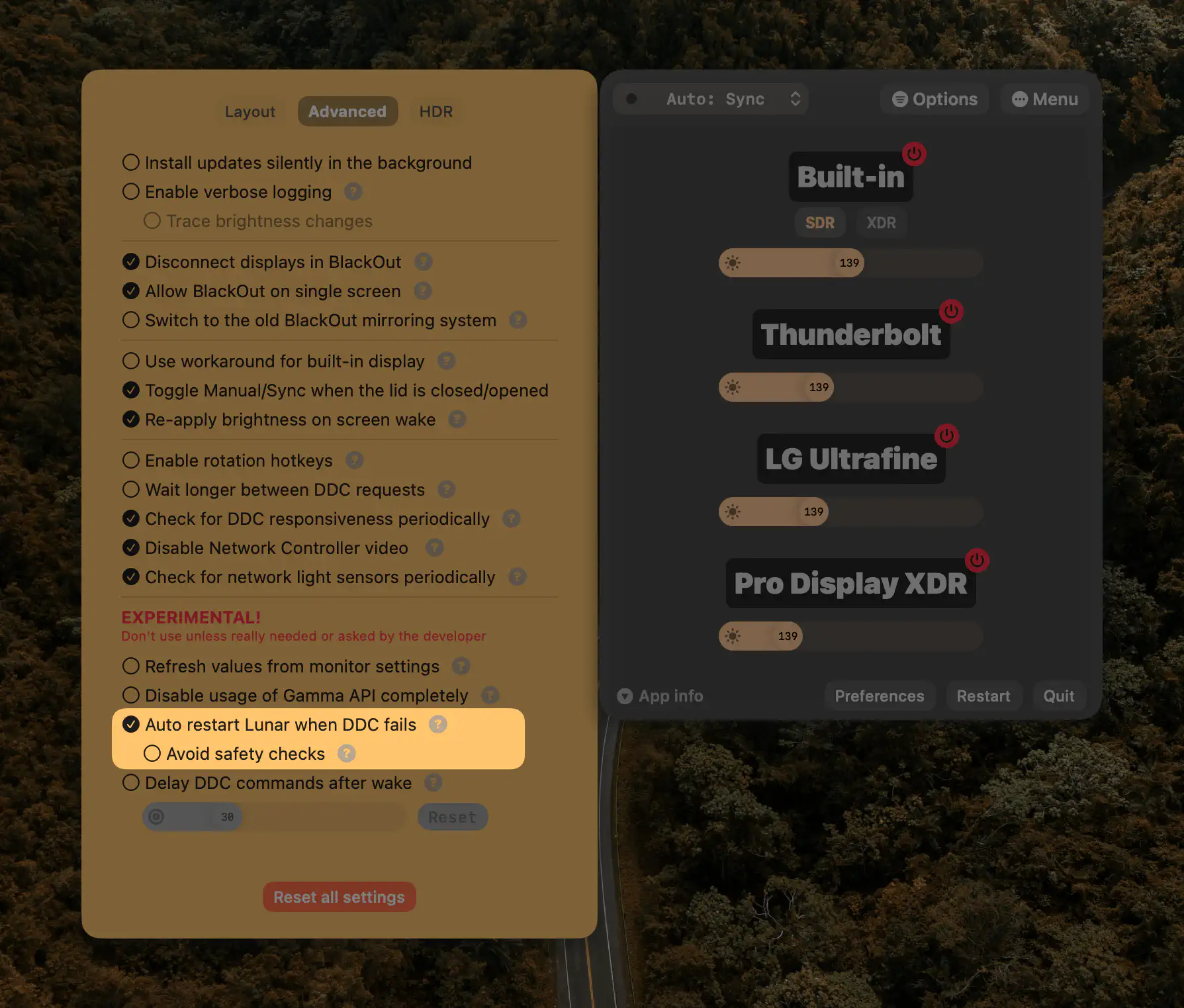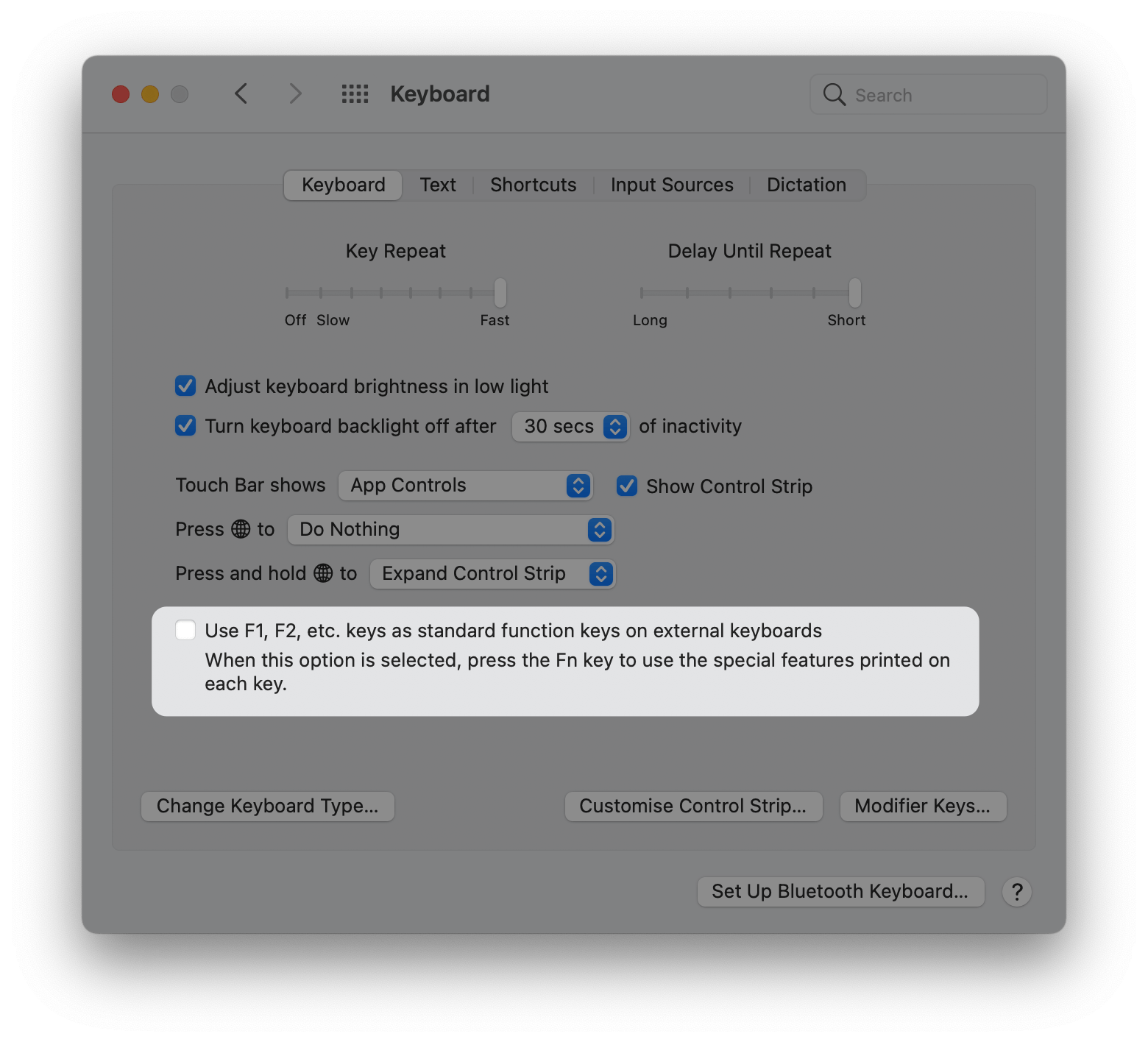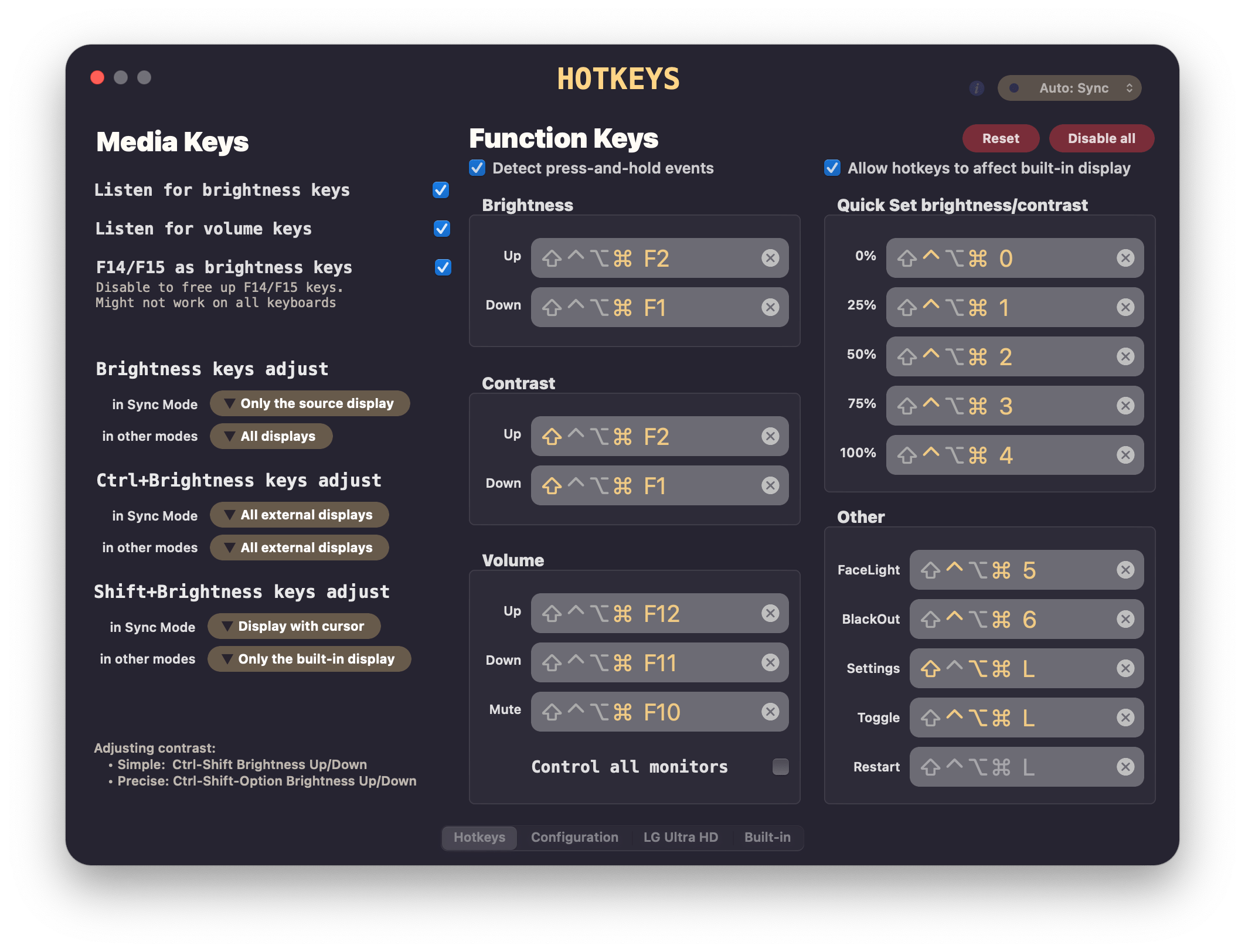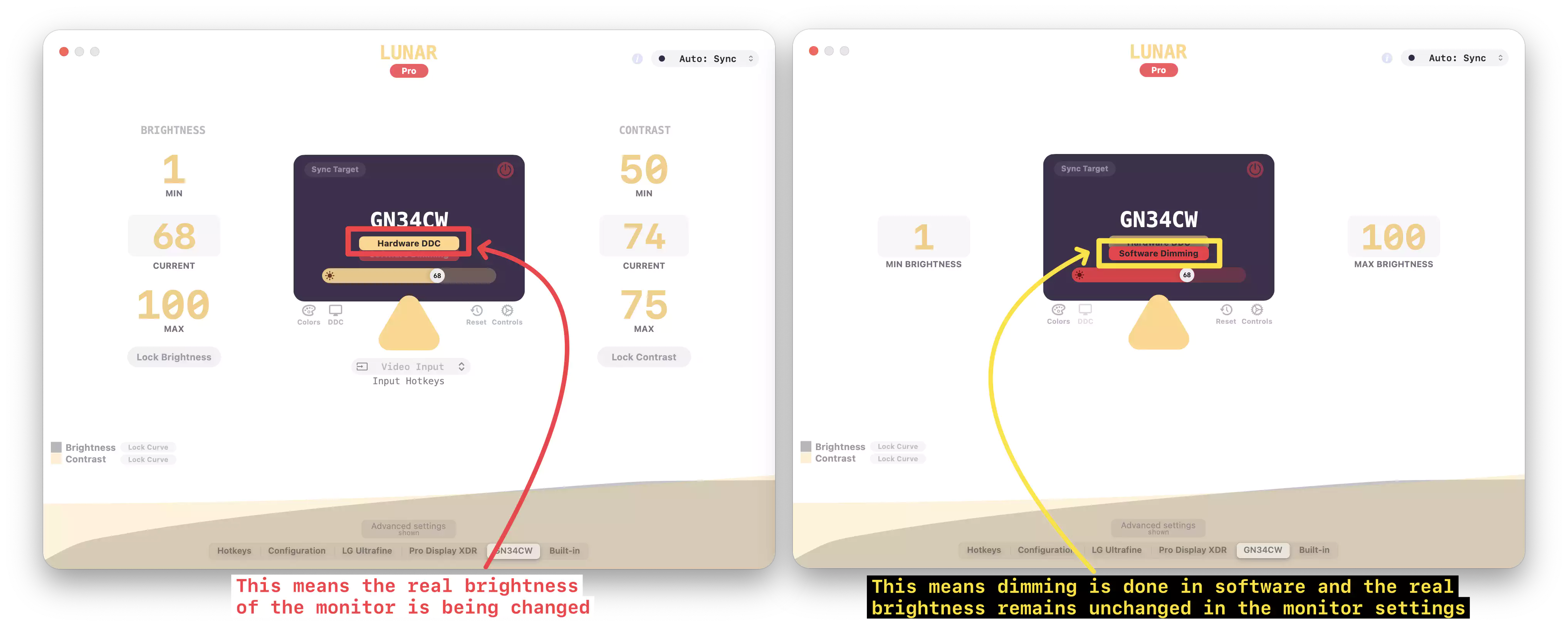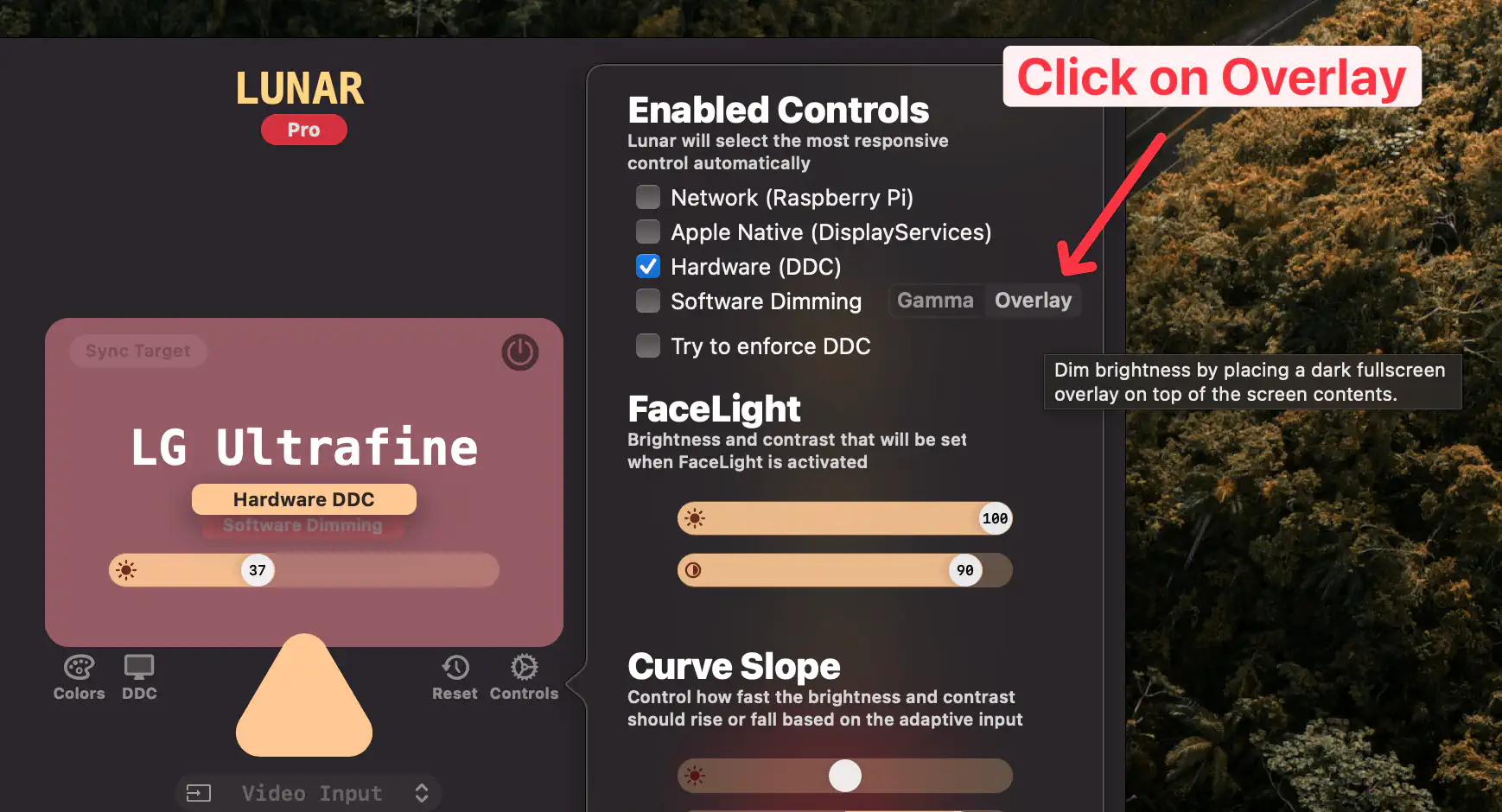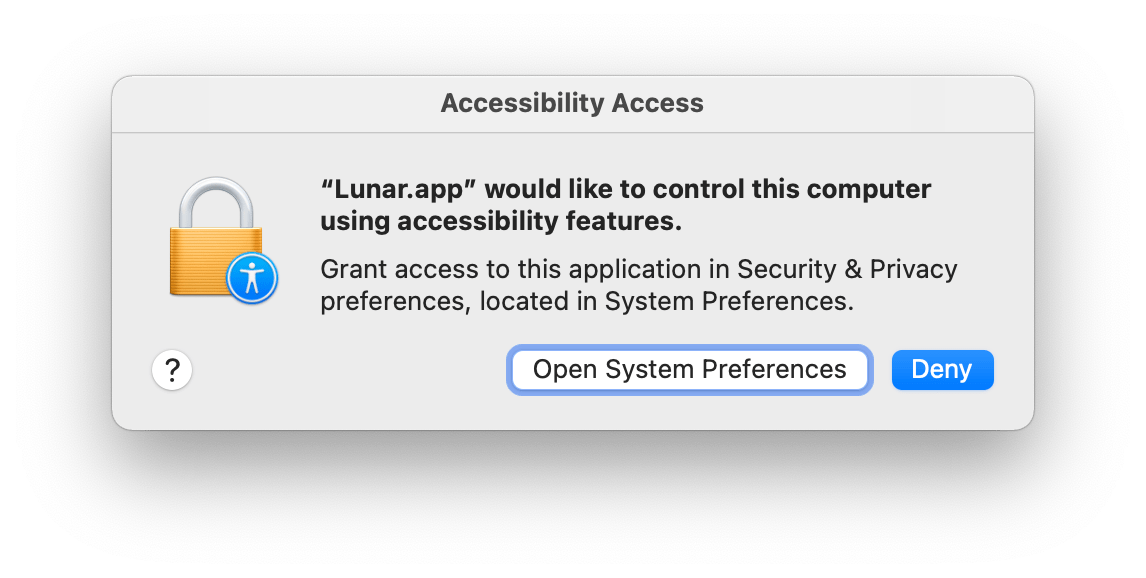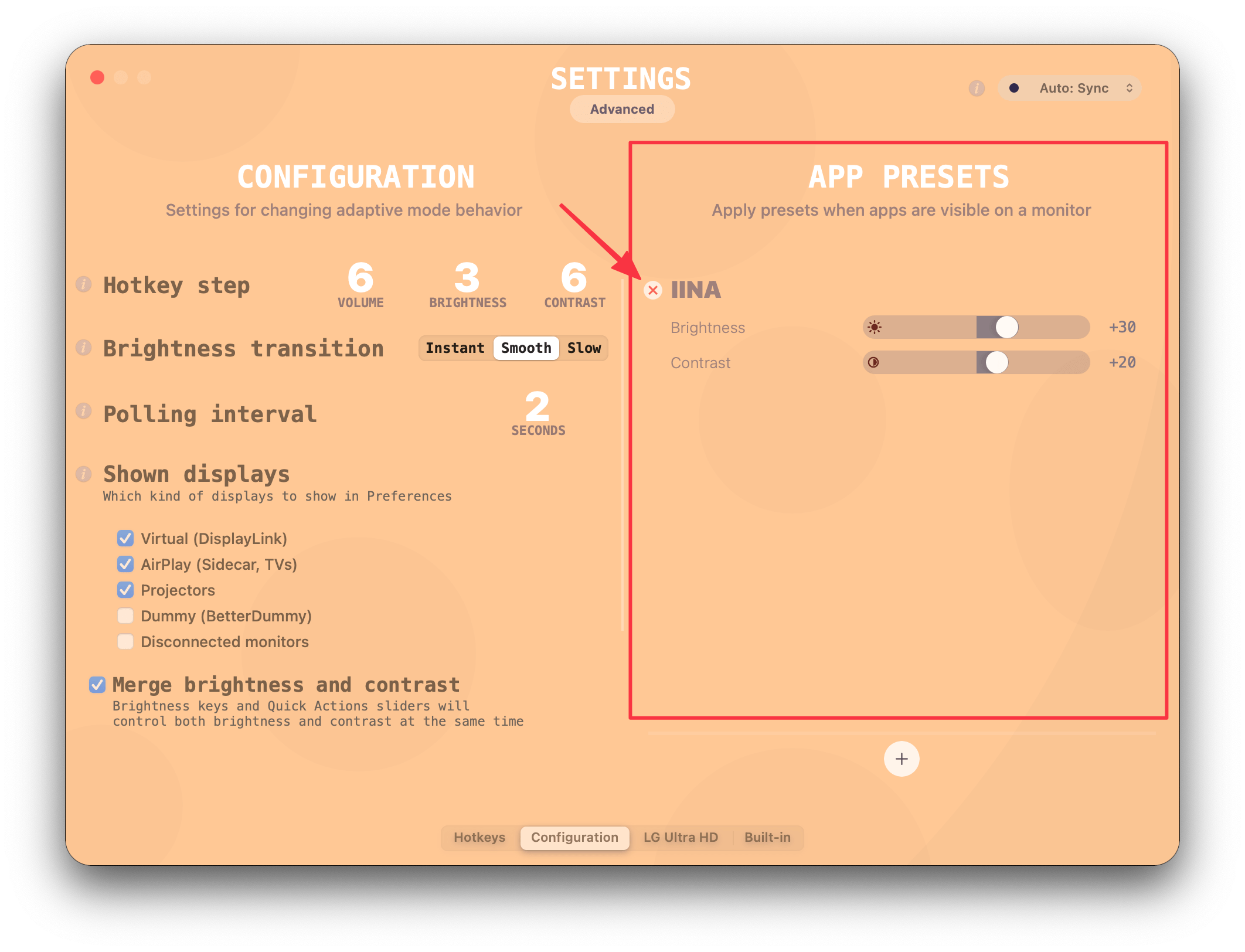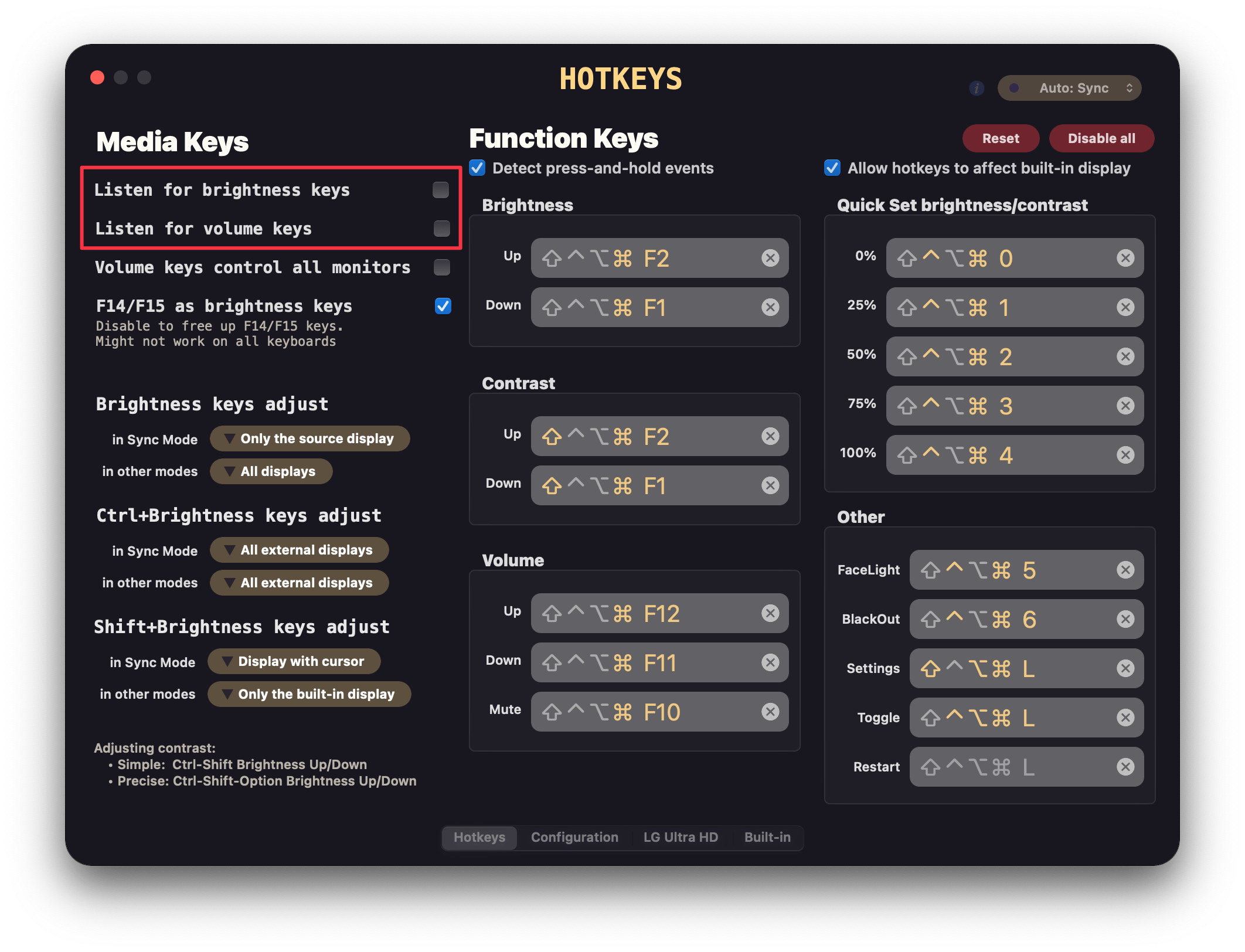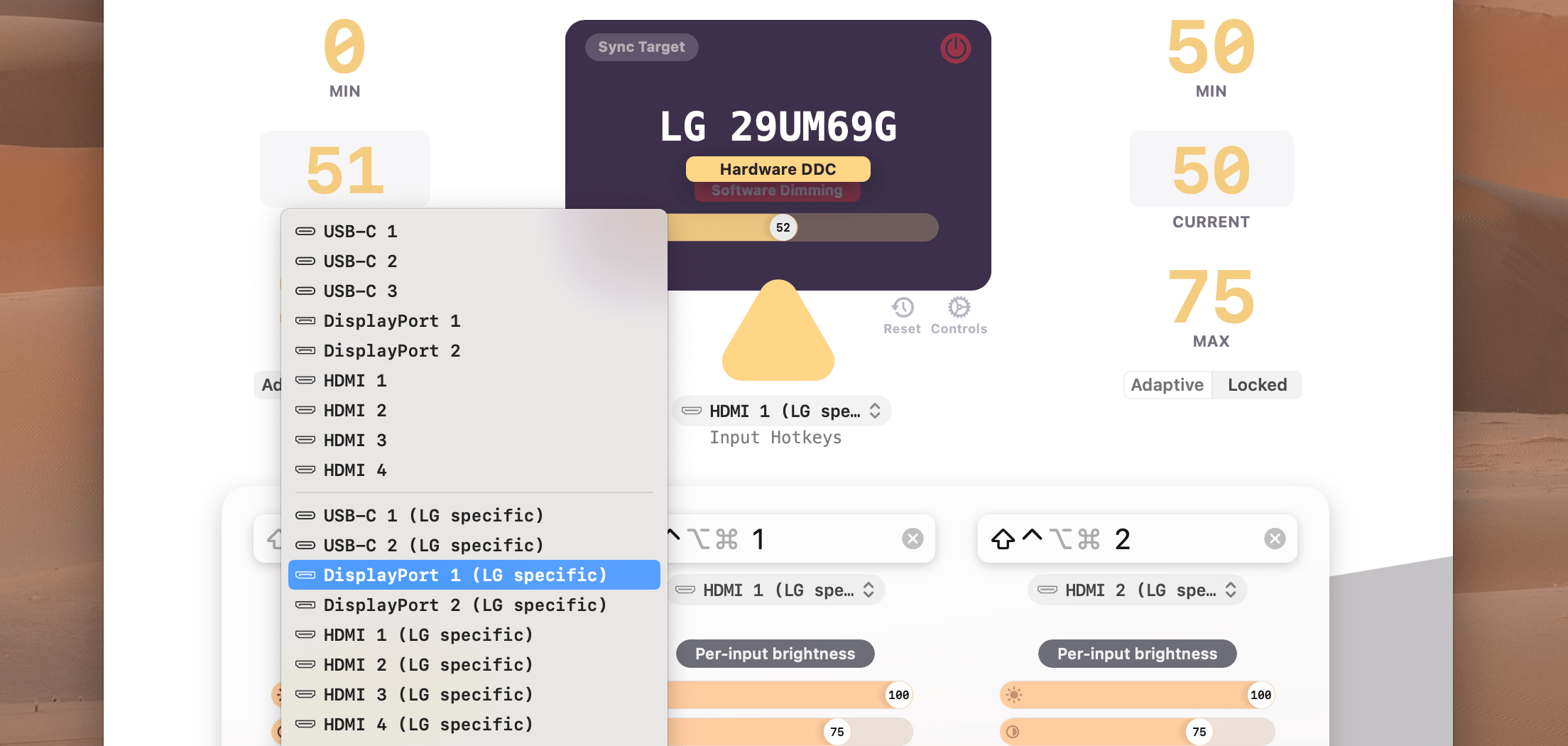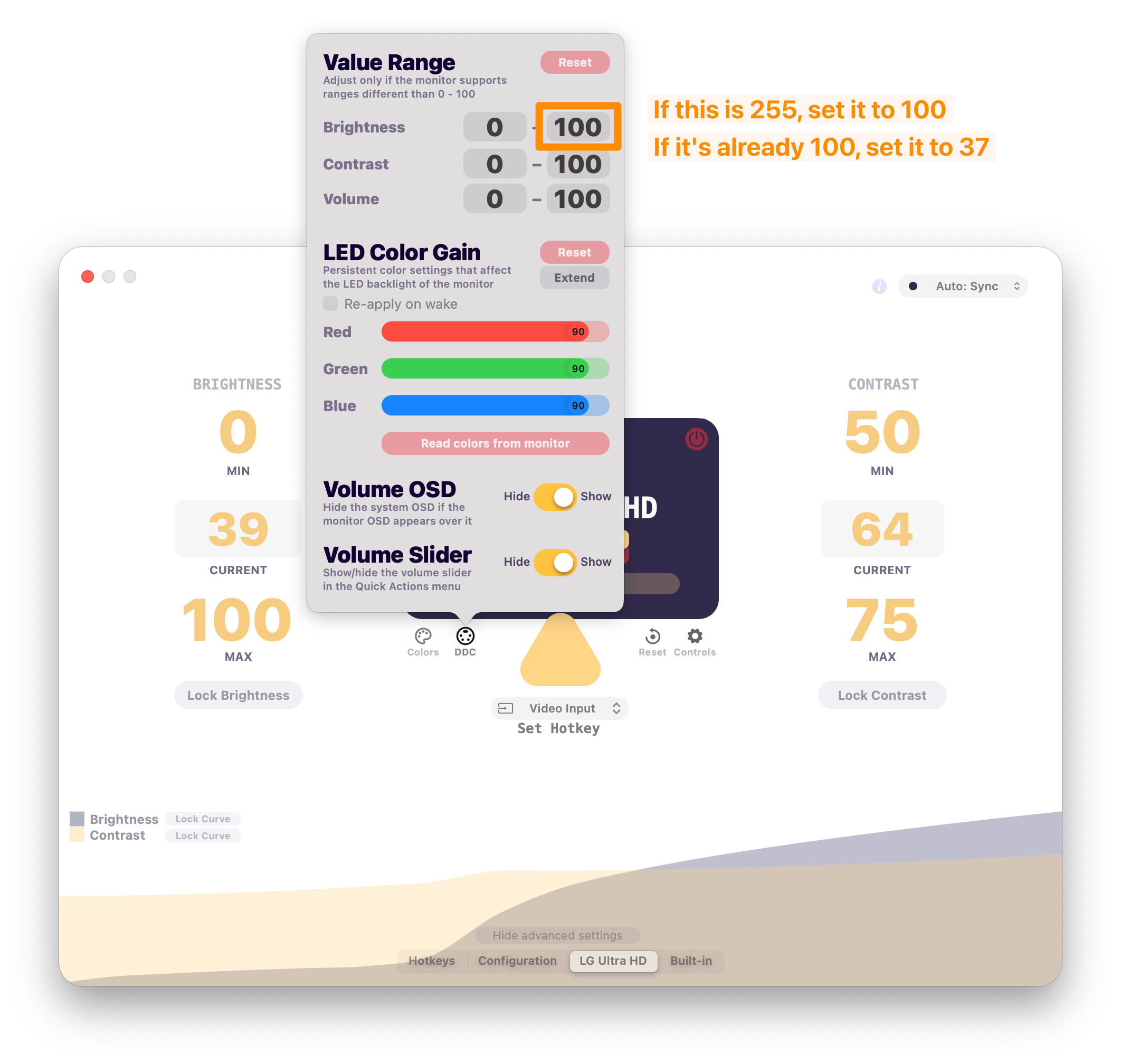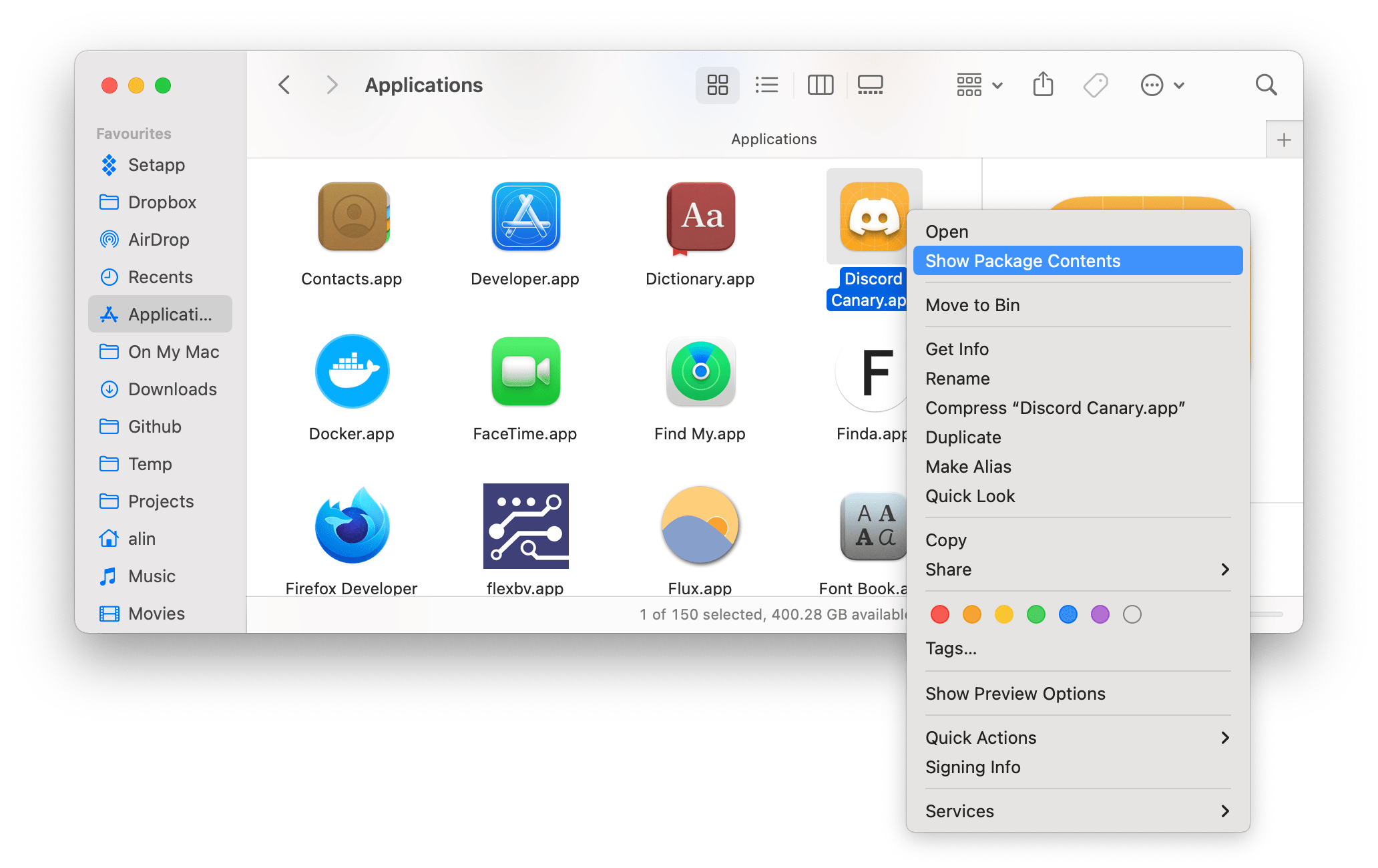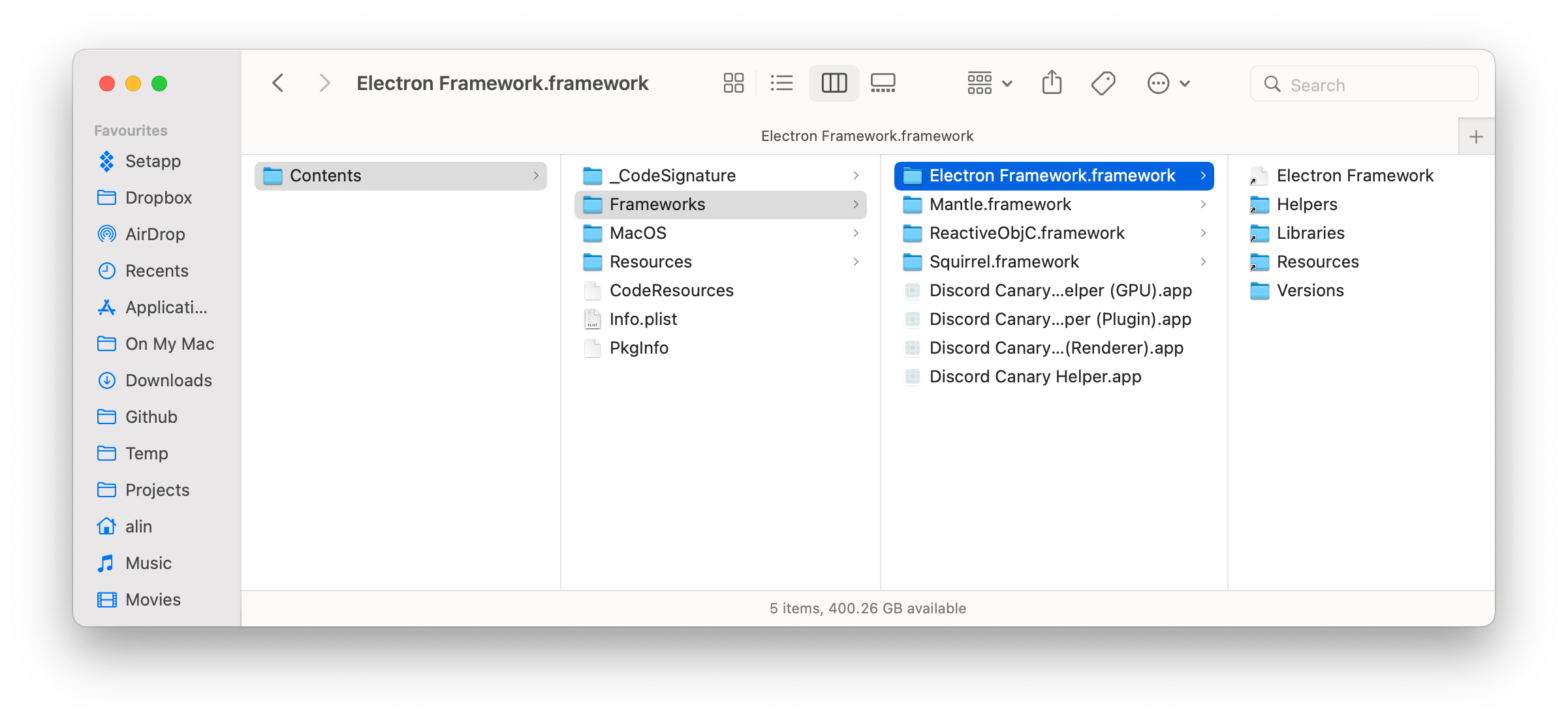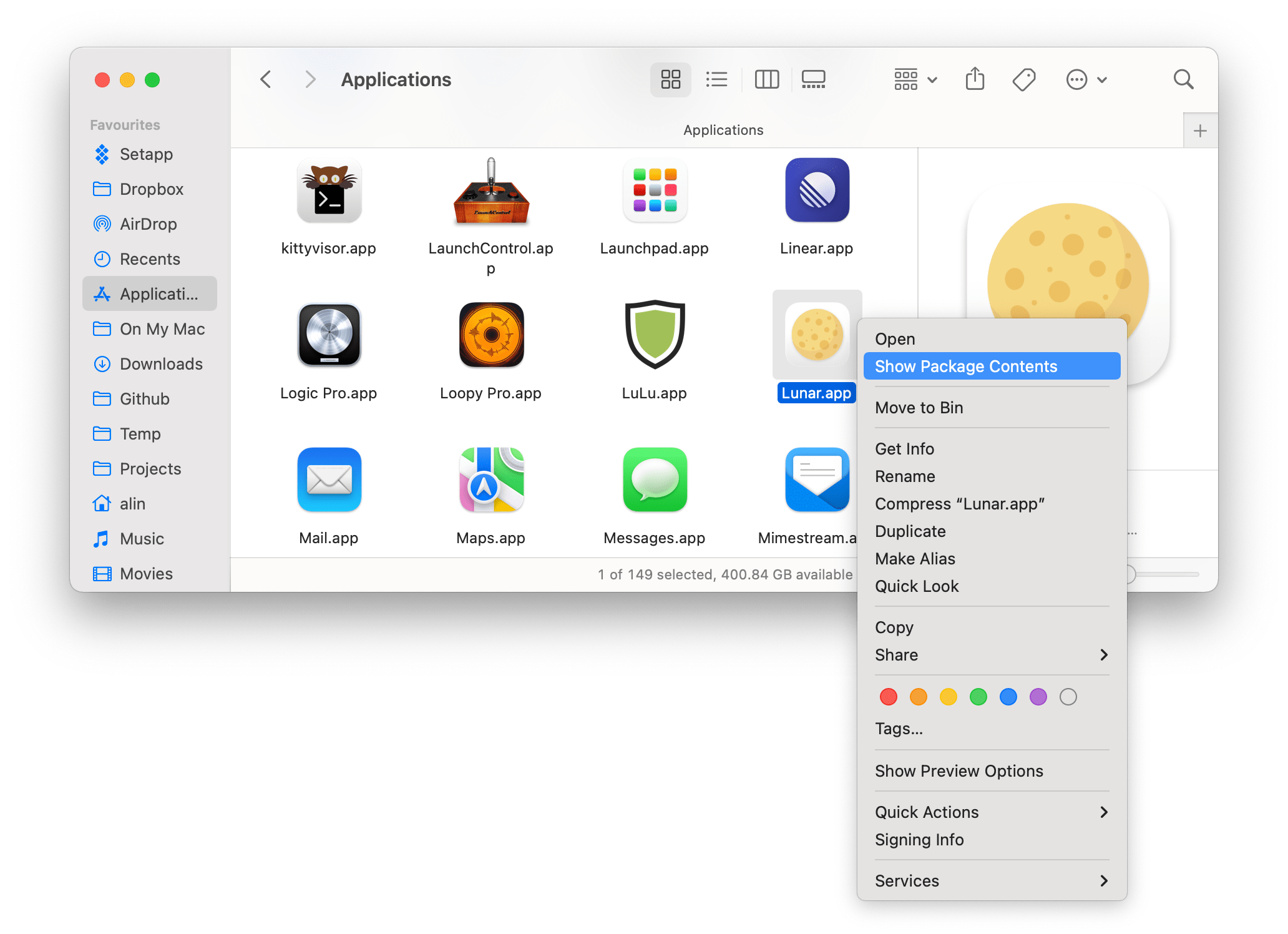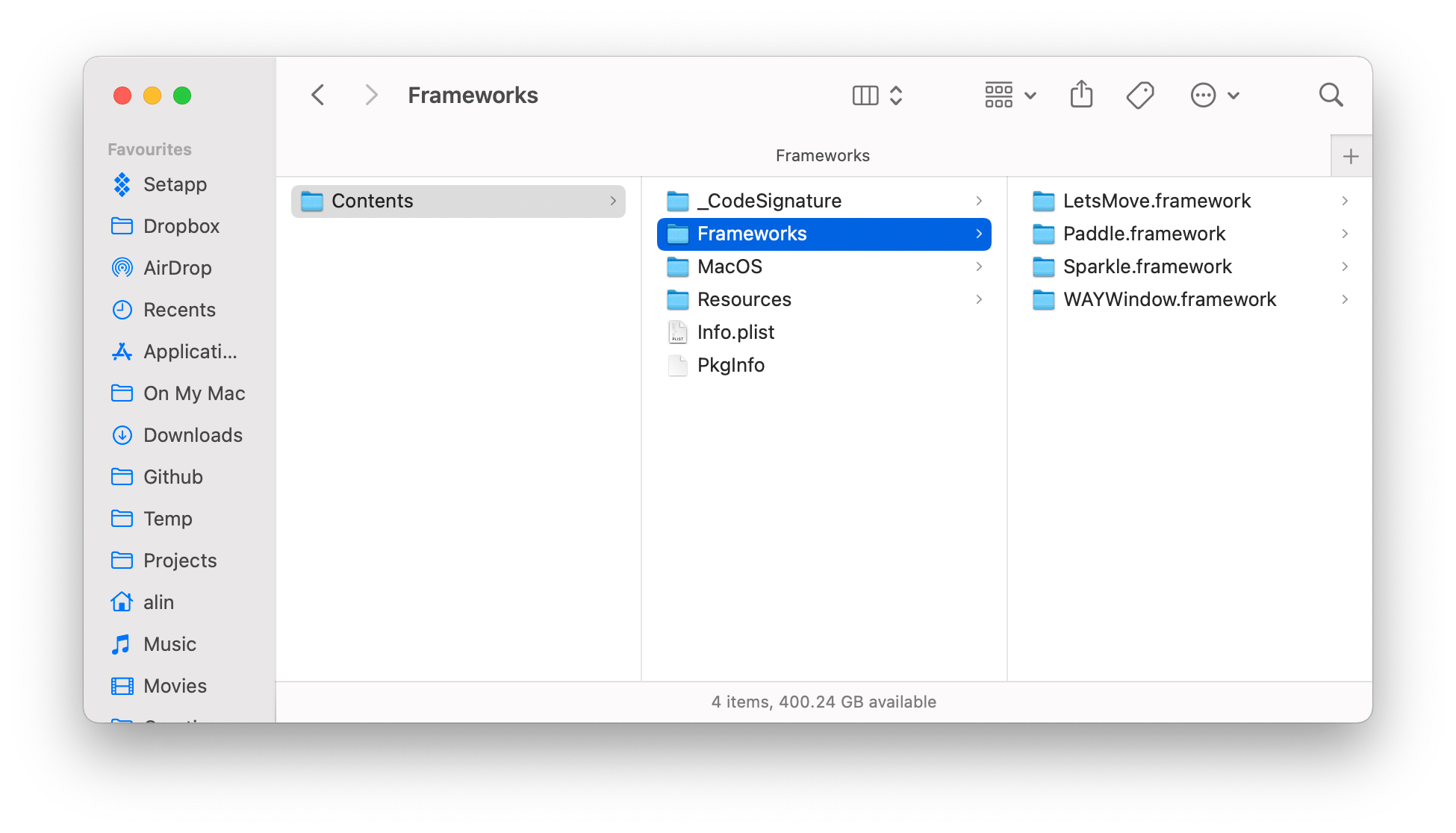Some monitors don't accept DDC commands (which Lunar uses to control brightness and volume).
Below are some possible causes for this issue.
Built-in HDMI port of the 2018 Mac Mini
The HDMI port of these devices is blocking DDC requests without a known cause.
Using one of the Thunderbolt ports usually fixes this (through USB-C-to-HDMI cable, Thunderbolt hub, etc.).
HDMI-to-USB-C Cables
Some users report that DDC controls are blocked on specific monitors when using HDMI to USB-C cables and that switching to DisplayPort fixes their problem.
If possible, try a DisplayPort to USB-C cable.
Samsung M7, M9, G7, G9 on USB-C
DDC seems to only work through the HDMI port of these monitors. The USB-C connection blocks hardware brightness/volume control.
Smart Monitors
In most cases, DDC is blocked by a monitor setting that tries to take complete control of Brightness, Contrast or Volume.
Usually disabling those functions in the monitor settings will allow Lunar control brightness.
Below are some settings that are known to block DDC, grouped by monitor vendor.
Samsung
- Disable Input Signal Plus
- Disable Magic Bright
- Disable Eye Saver Mode
- Disable Eco Saving Plus
- Disable Smart ECO Saving
- Disable PIP/PBP Mode
- Disable Dynamic Brightness
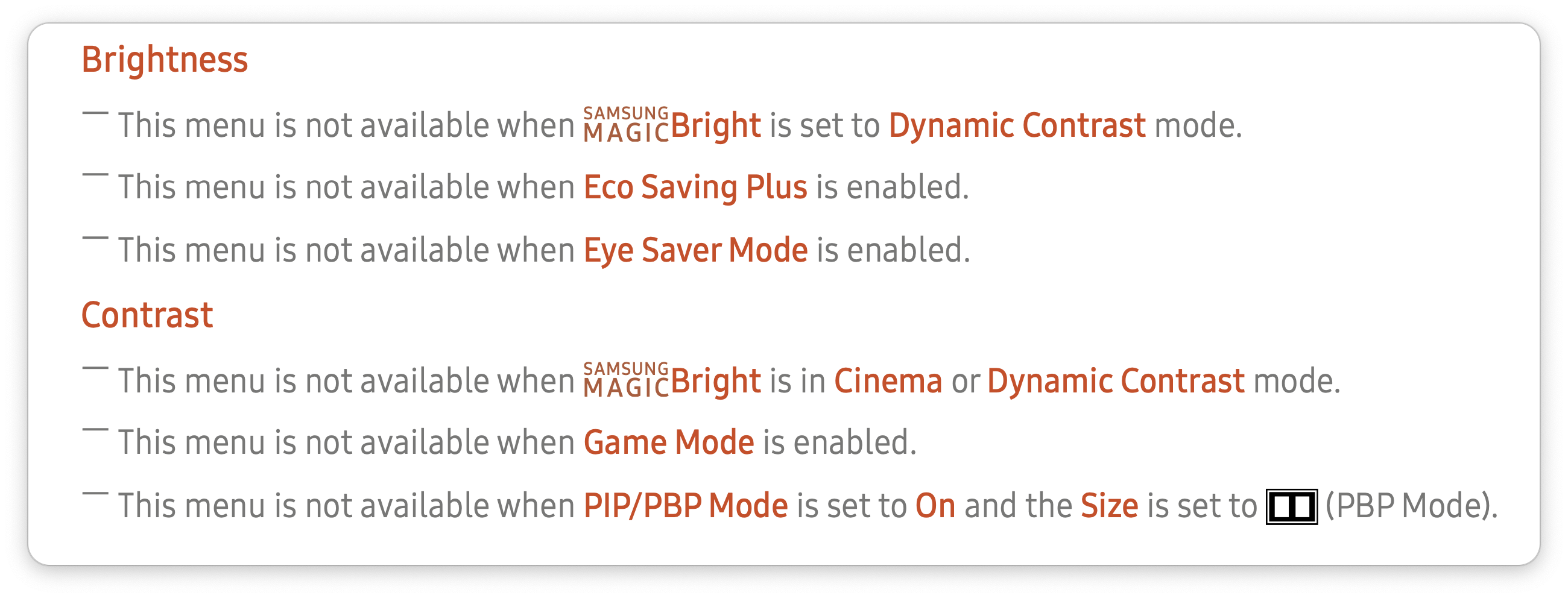
Dell
- Disable Uniformity Compensation
- Set Preset Mode to Custom or Standard to allow DDC
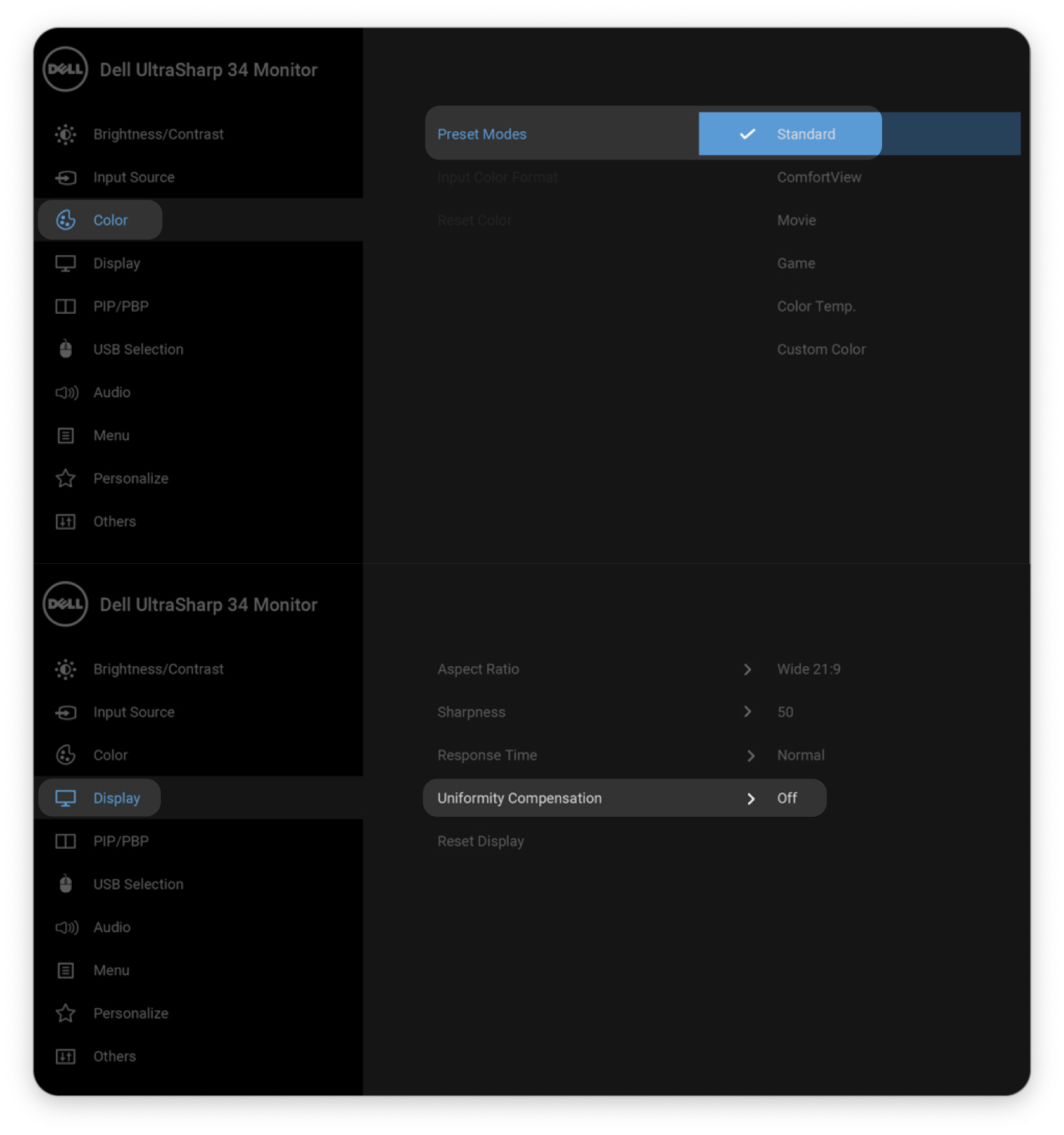
LG
- Disable Uniformity
- Disable Auto Brightness
- Set Picture Mode to Custom or Standard to allow DDC
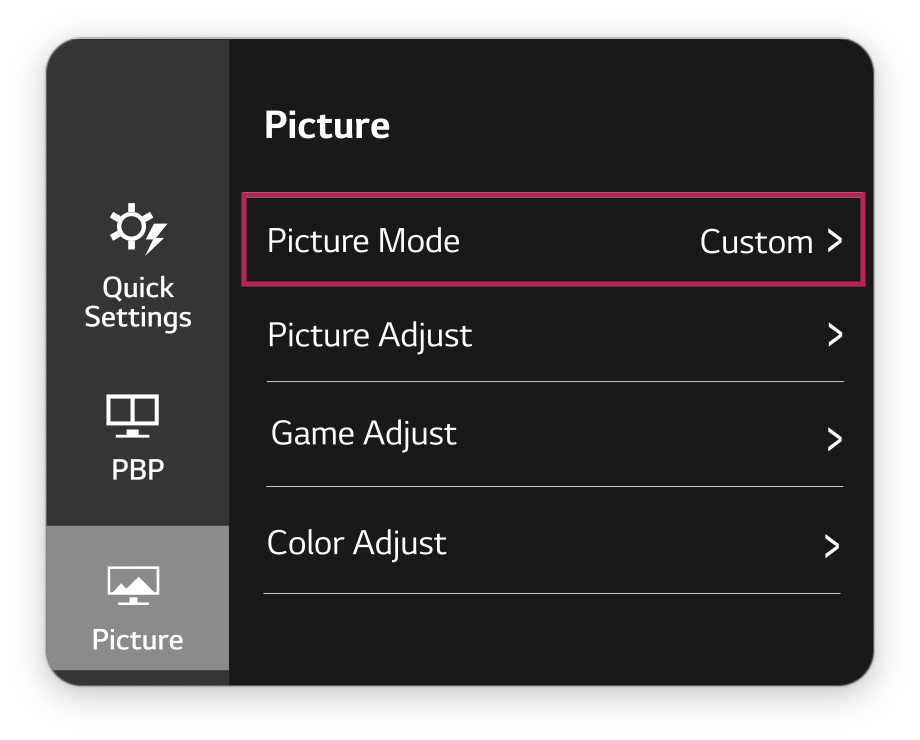
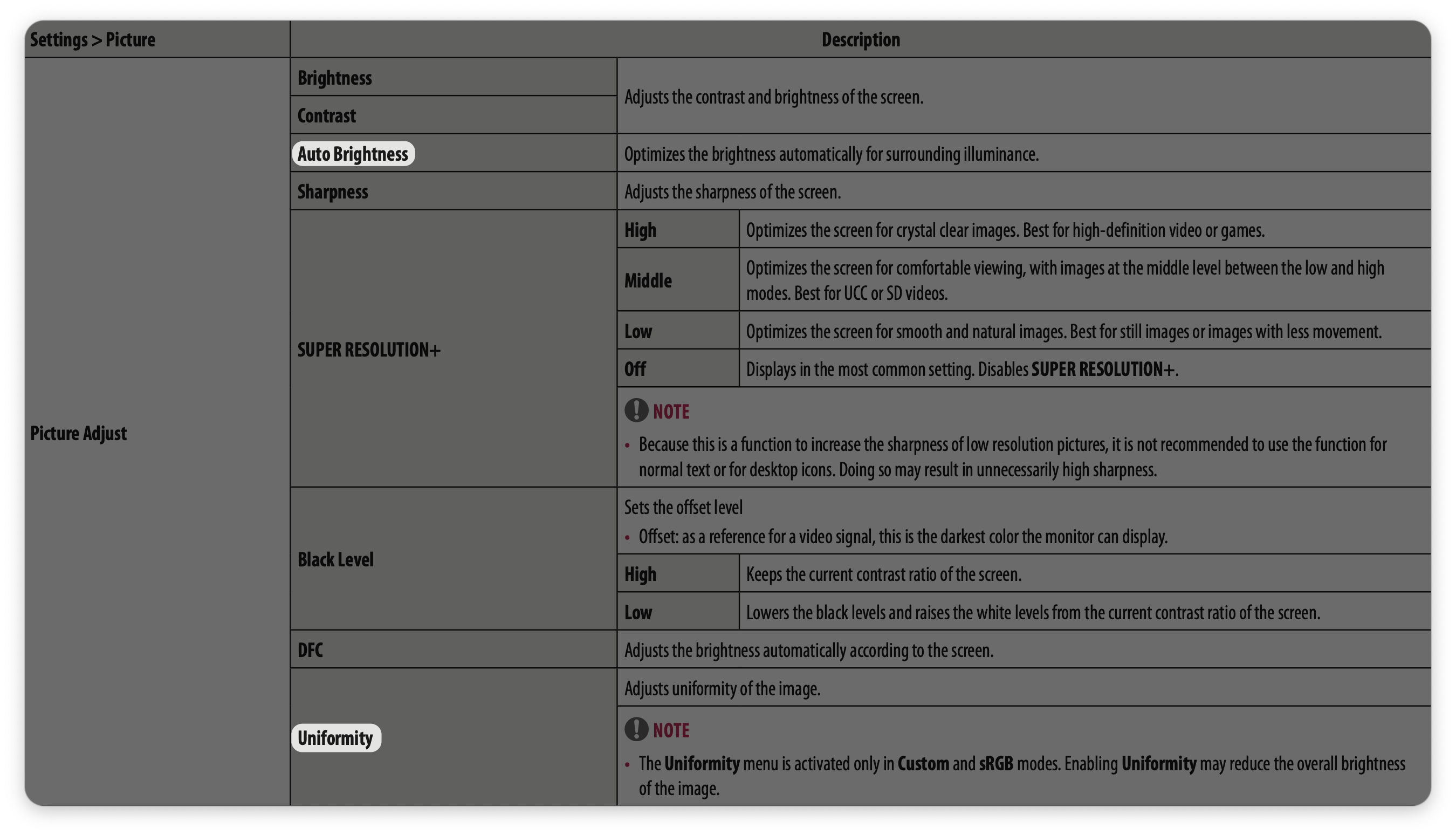
BenQ
- Disable Bright Intelligence
- Disable Bright Intelligence Plus or B.I.+
- Set Picture Mode to Standard
Lenovo
- Disable Local Dimming
- Disable HDR
- Disable Dynamic Contrast
- Set Color Mode Custom
- Set Scenario Modes to Panel Native
Xiaomi Mi Monitor
- Disable Dynamic Brightness
- Set Smart Mode to Standard
PRISM
Others
- Disable Ambient Light Sensing
- Disable Dual DisplayPort
- Set Dynamic Picture Mode to Custom or Standard to allow DDC
- Set Color Presets to Custom or Standard to allow DDC
DDC blockers
Other cases where DDC will not work:
- TV working as monitor
- TVs don't support the
VESA Monitor Control Command Set which is needed for sending DDC requests
- DisplayLink
- DisplayLink uses proprietary drivers and while it has support for DDC, that functionality is not provided on macOS
- Lunar can control DisplayLink monitors using the Network Control feature
- HDMI port of the 2018 Mac Mini
- The HDMI port of these devices is blocking DDC requests without a known cause
- Using the Thunderbolt connector fixes this (through USB-C-to-HDMI cable, Thunderbolt hub, etc.)
- Non-compliant hub/dock/adapter
- This is the most common issue and it can't be fixed in software
- Because most new Macs only have USB-C ports, most users use some kind of Thunderbolt hub or dock
- A lot of these hubs block DDC requests completely,
- If the hub supports more than one monitor, it usually forwards DDC requests to only one of them
- Here are some of the hubs that are known to work:
If Lunar doesn't fallback automatically to a working control mode, you can manually disable Hardware (DDC) controls from the Controls menu:
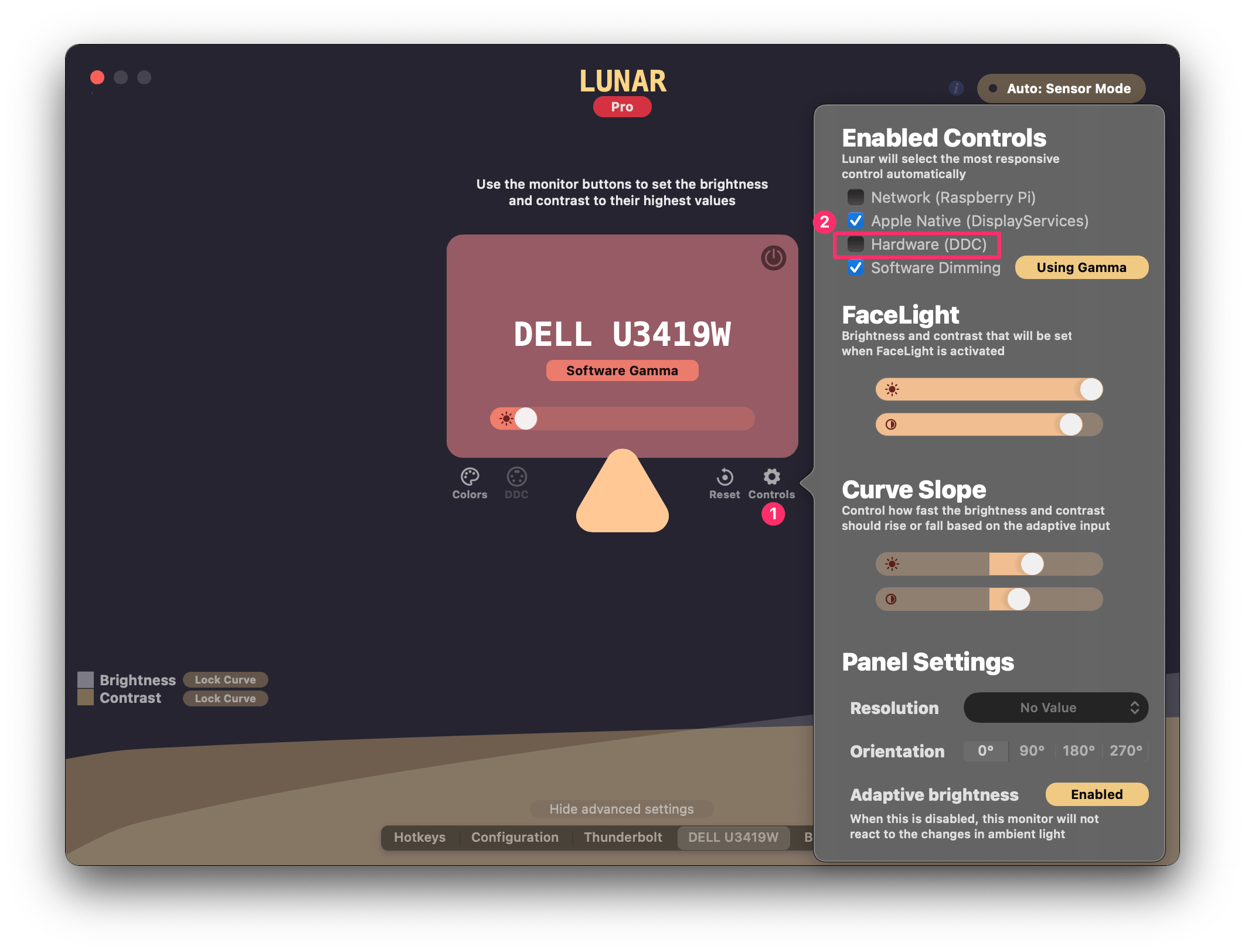
Lunar will fallback to adjusting brightness and contrast in software using Gamma values.
Notes about Gamma:
- Conflicts with other apps that use Gamma like f.lux so you have to quit them
- Night Shift is a good alternative as it doesn't use Gamma
- Can only lower the brightness, not increase it
- That's why you have to manually set the monitor brightness and contrast to maximum using its physical buttons
- Can't change the volume or input of the monitor
- Those features require DDC

